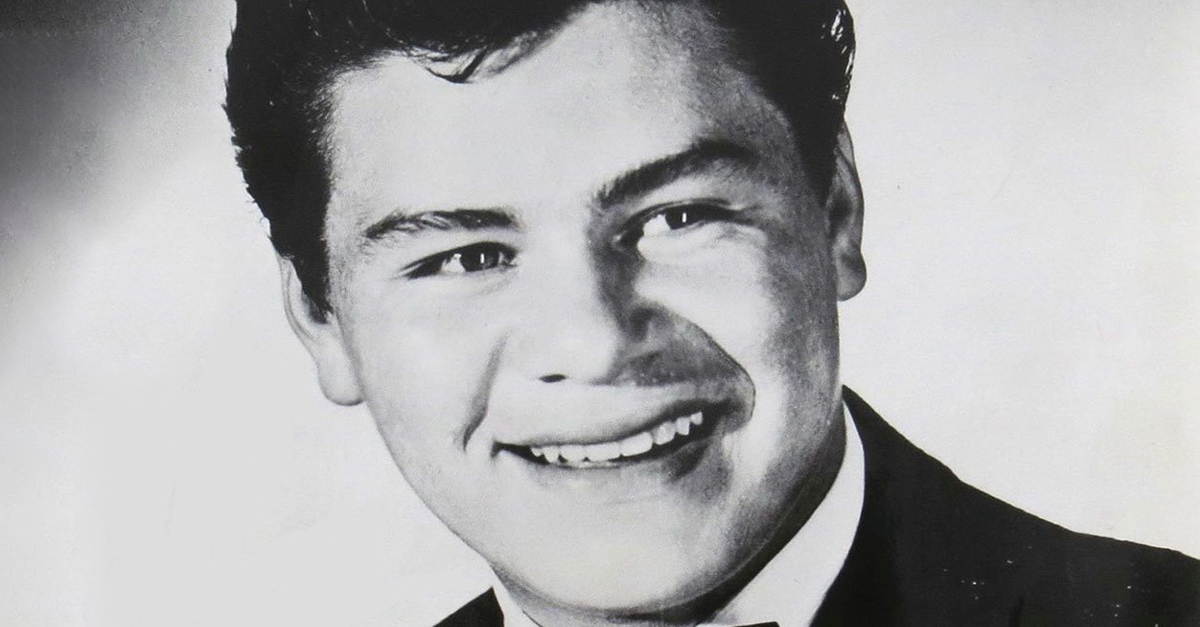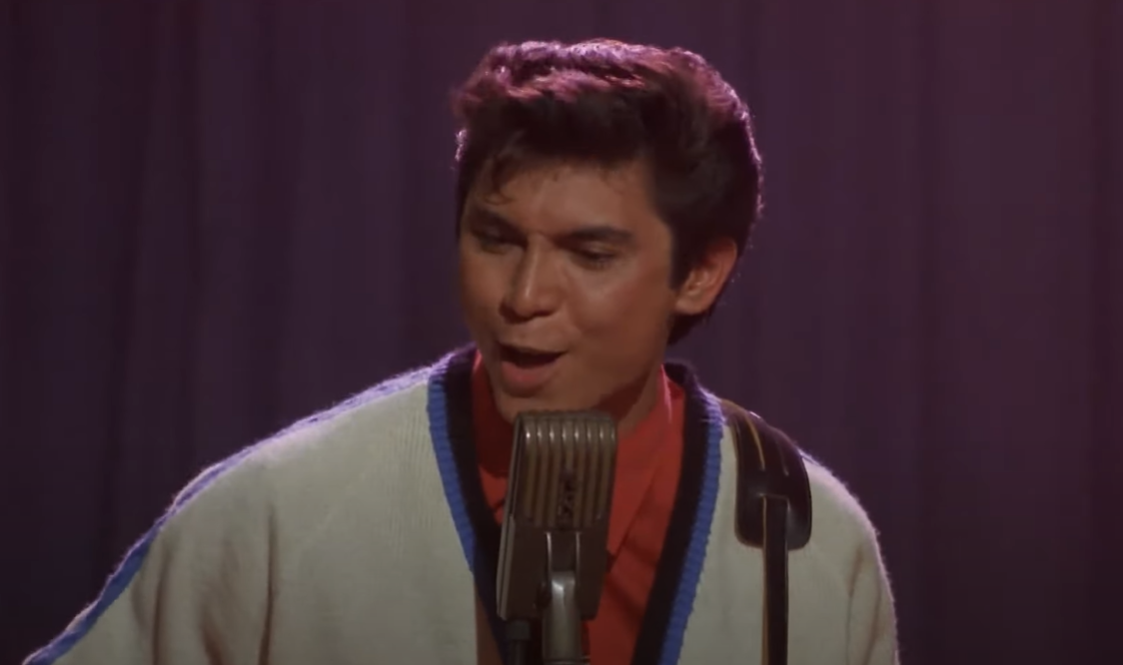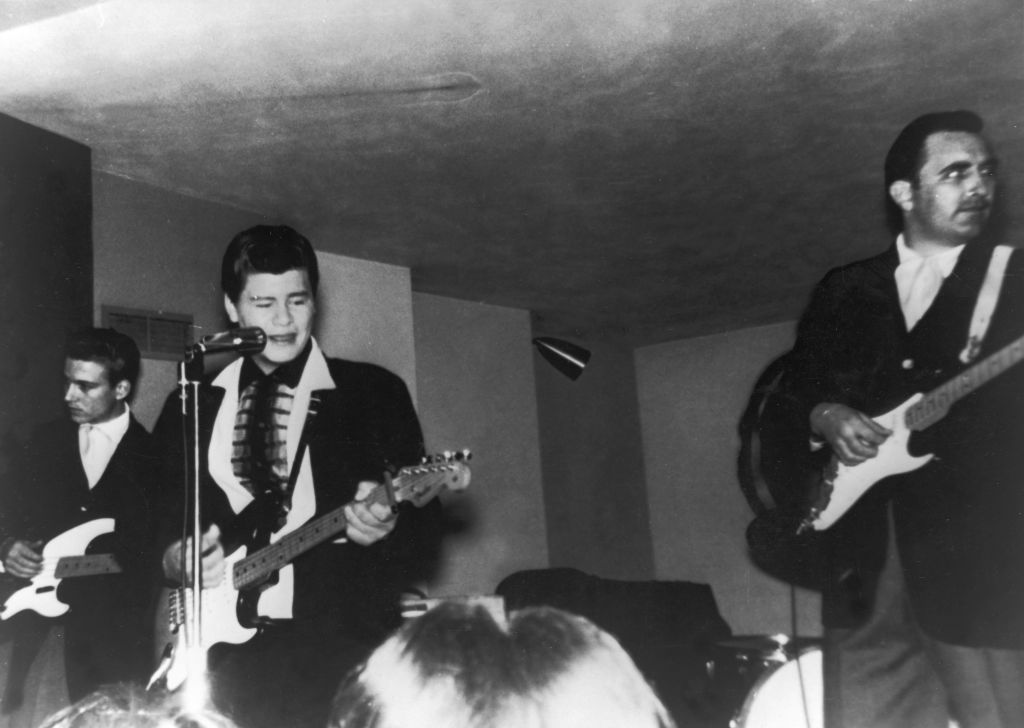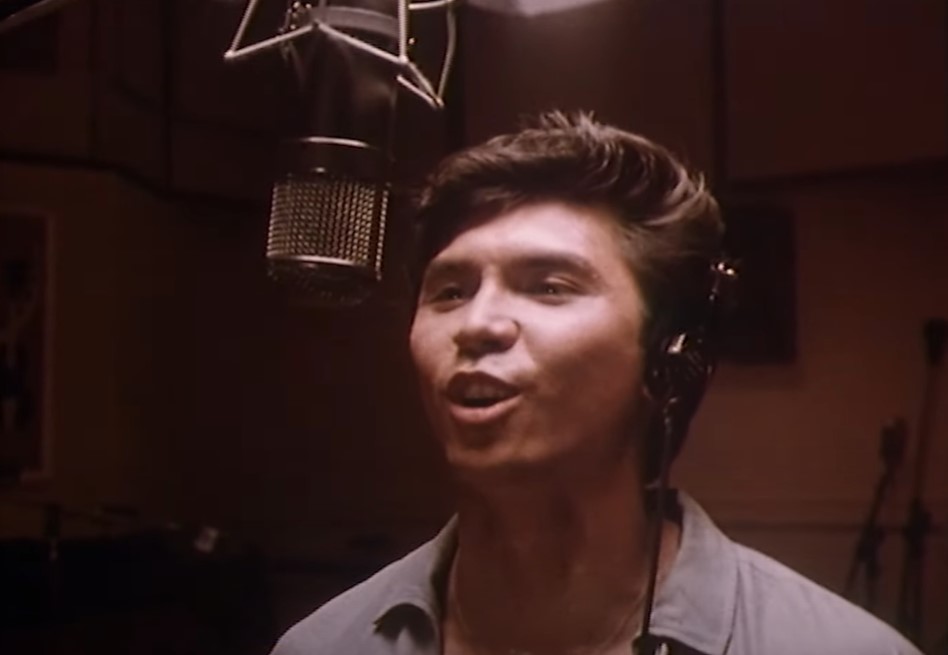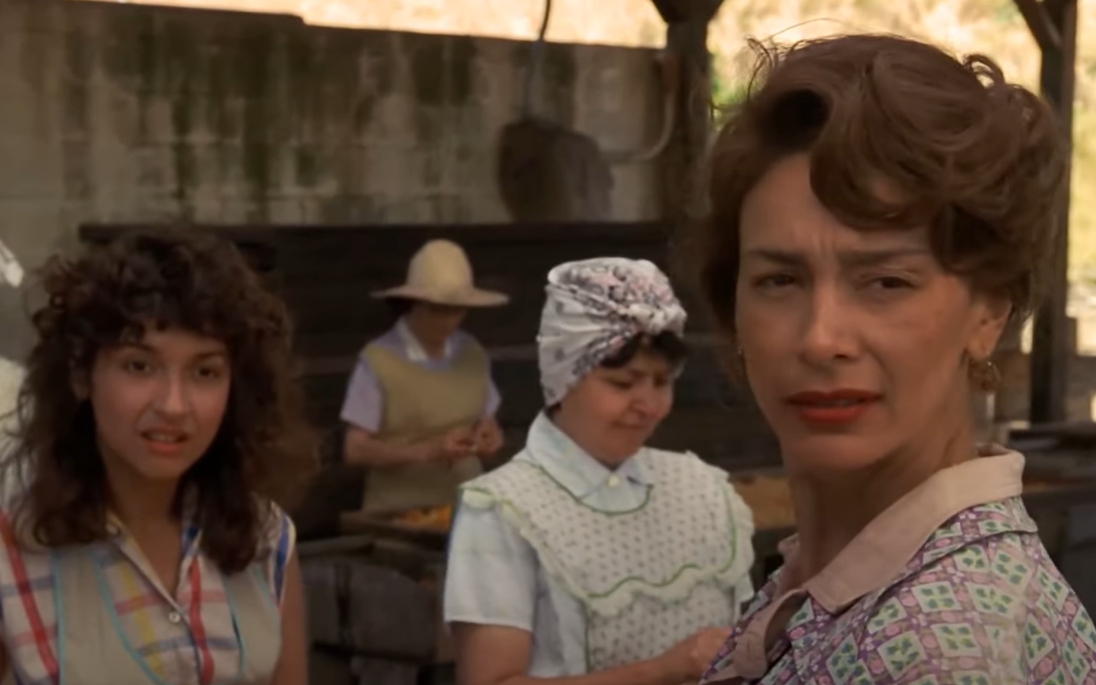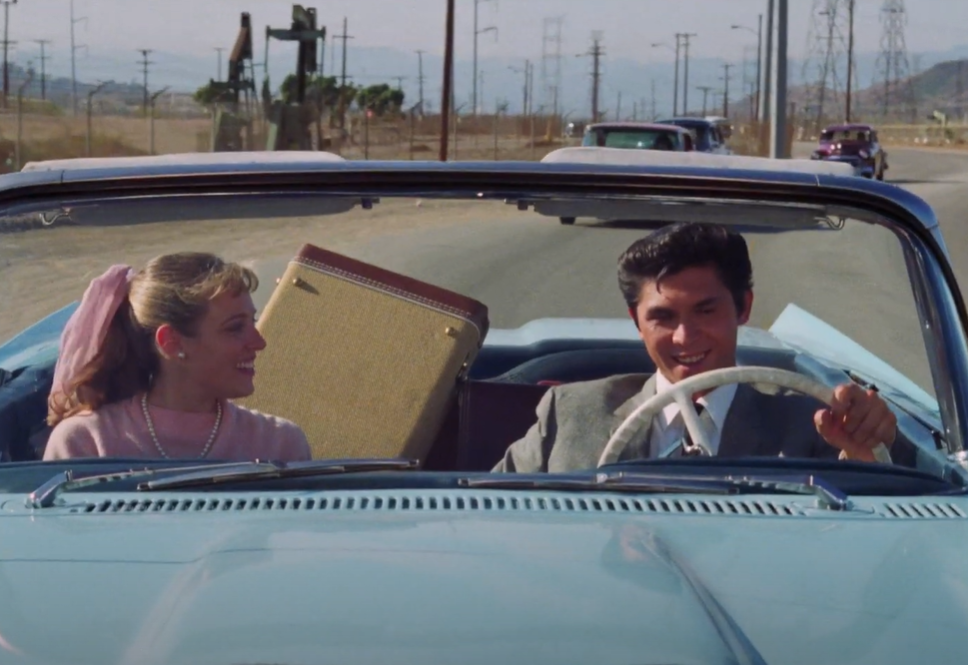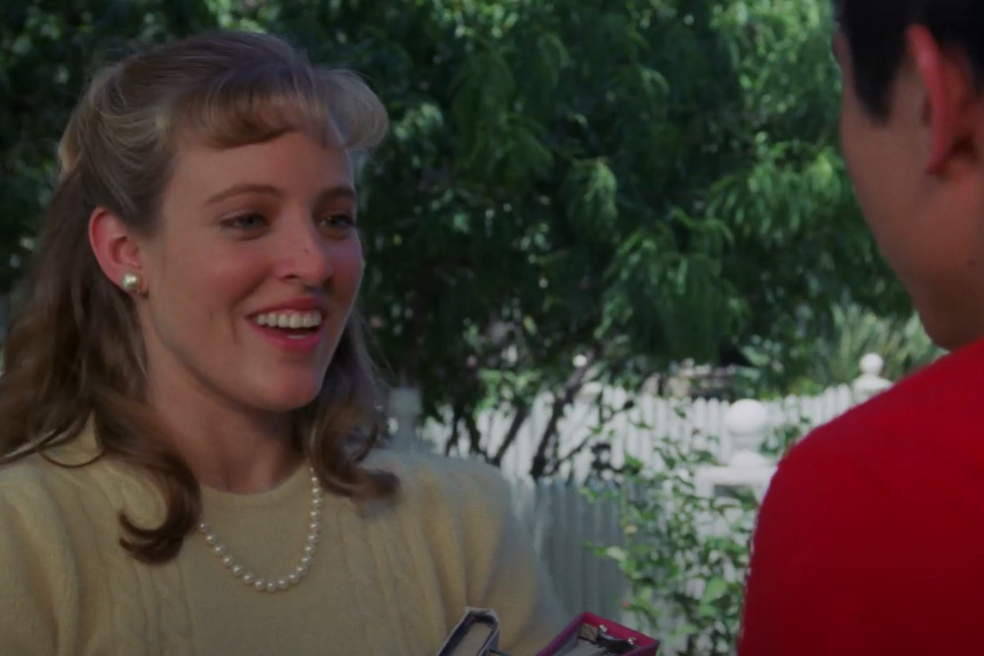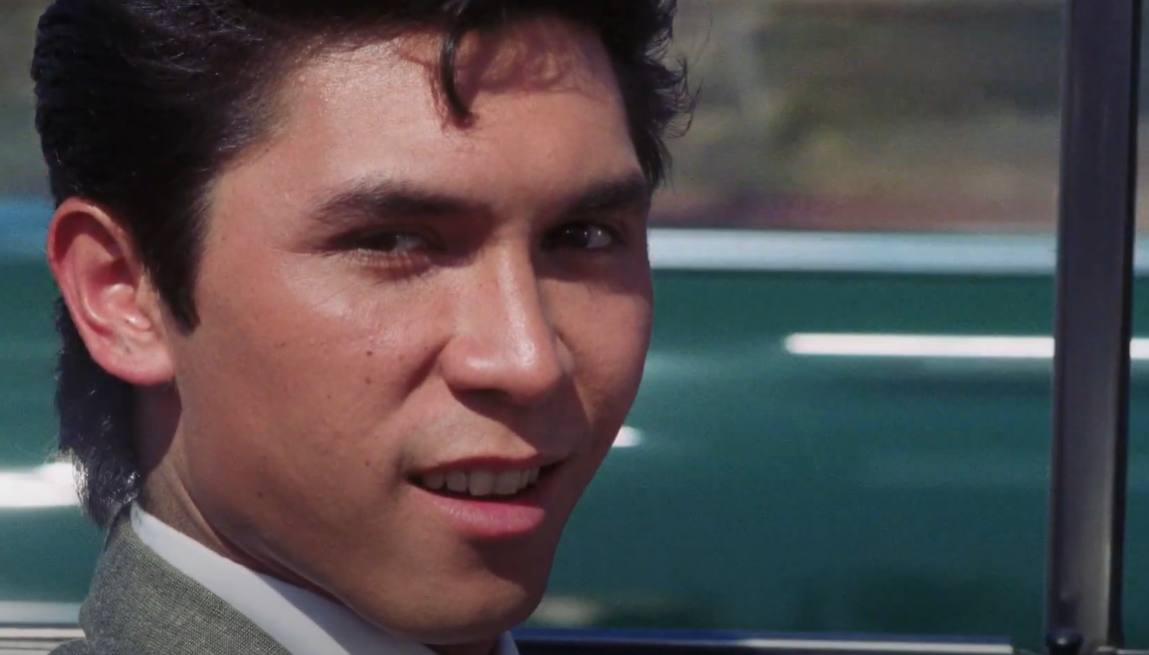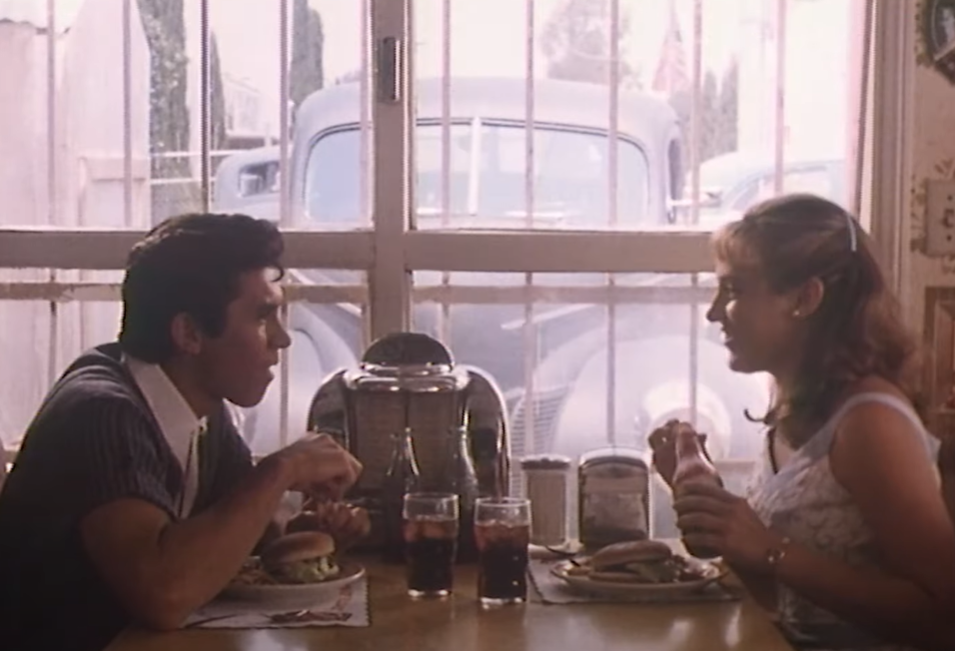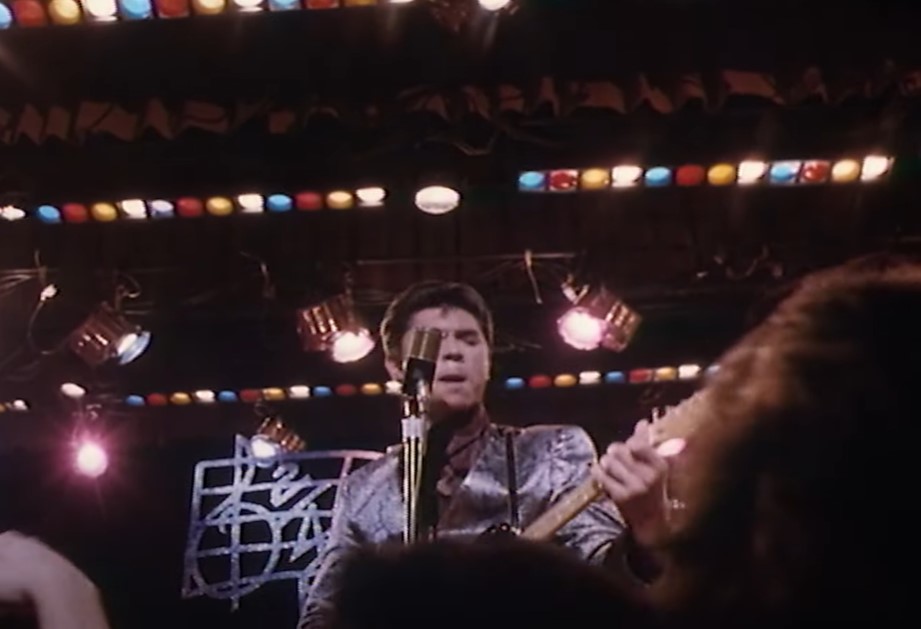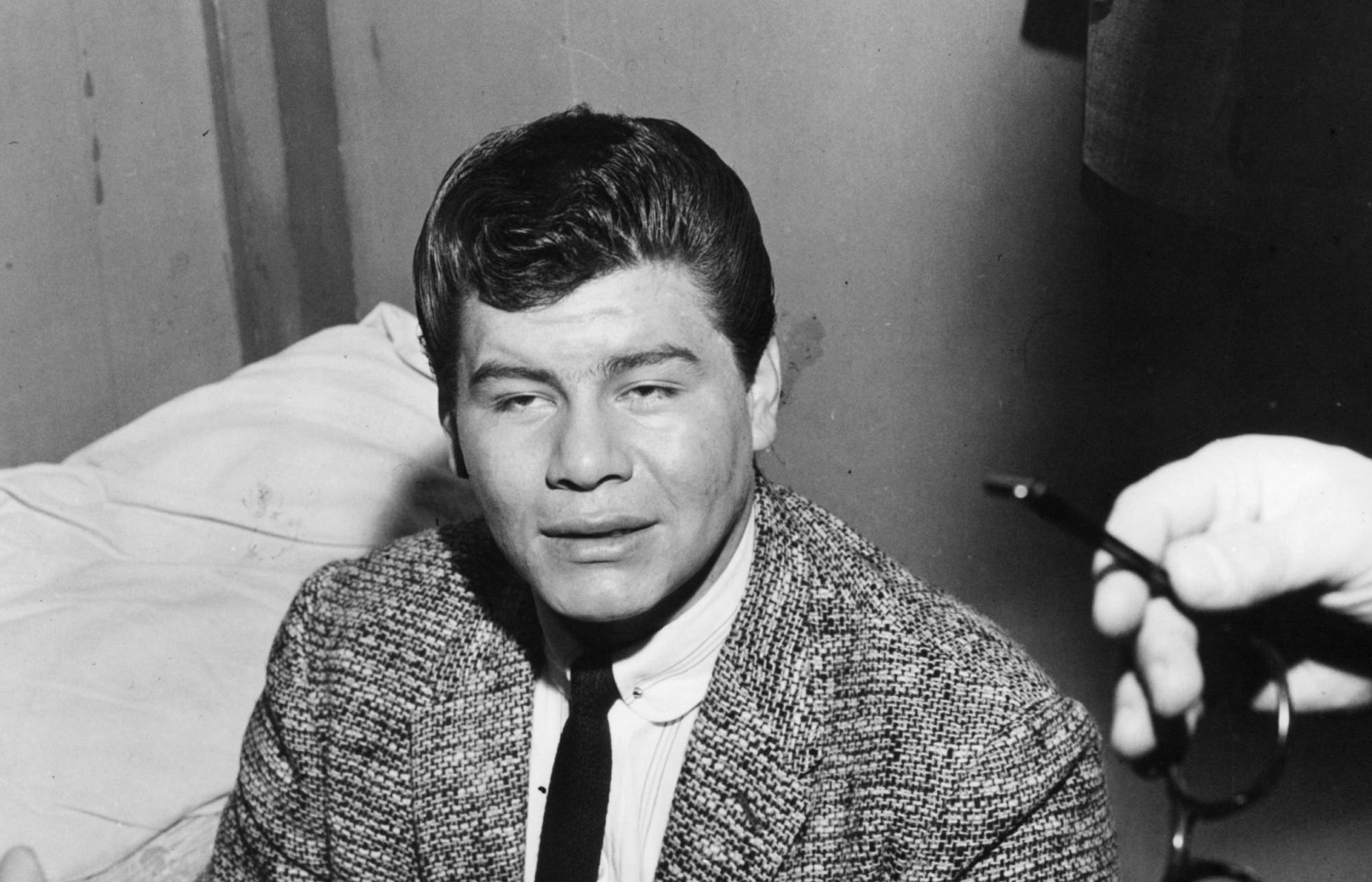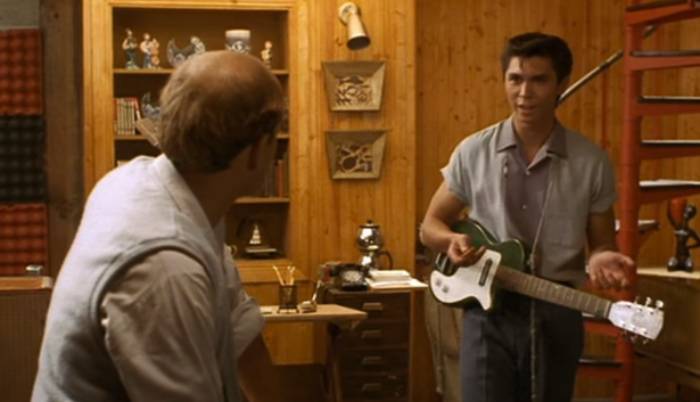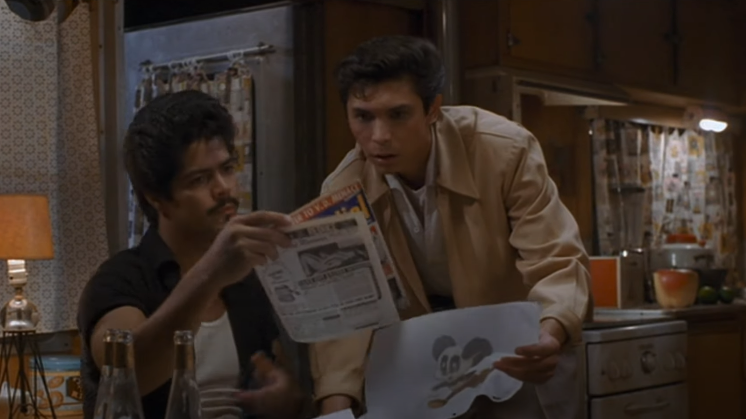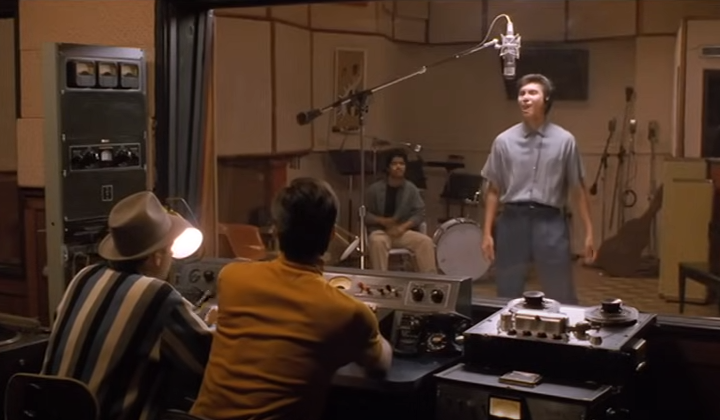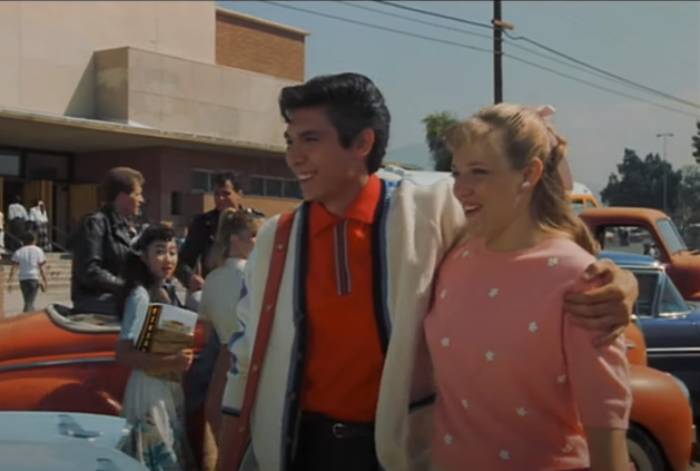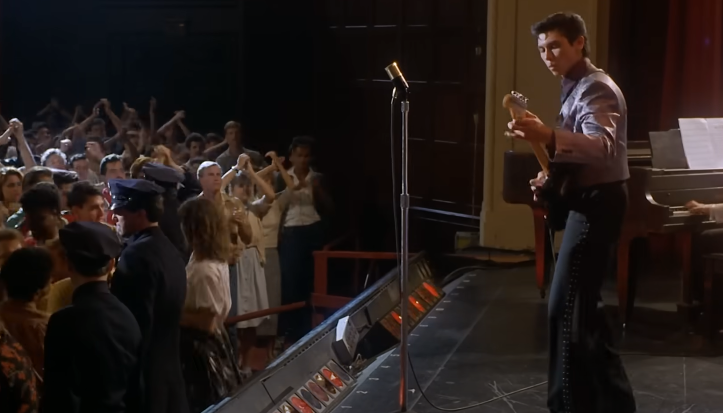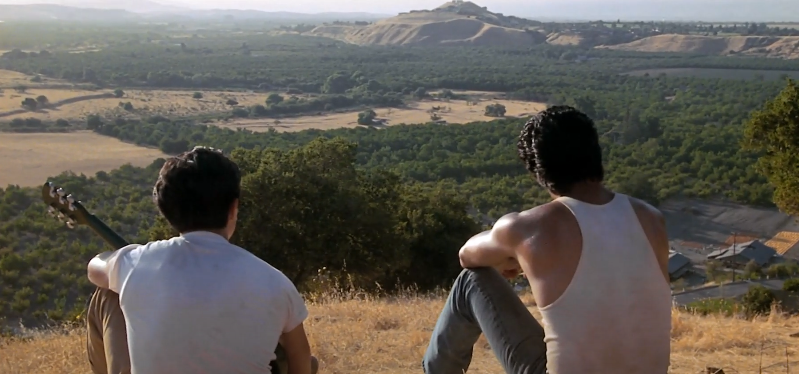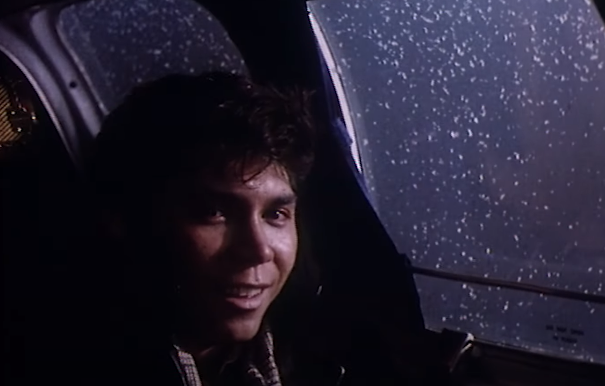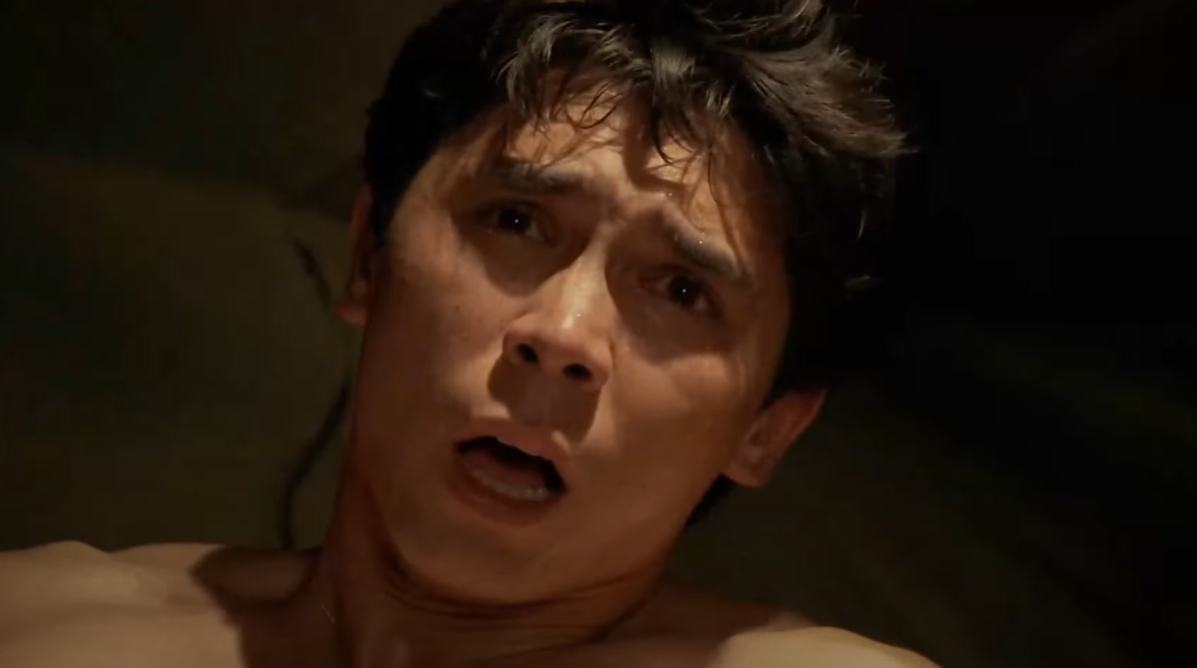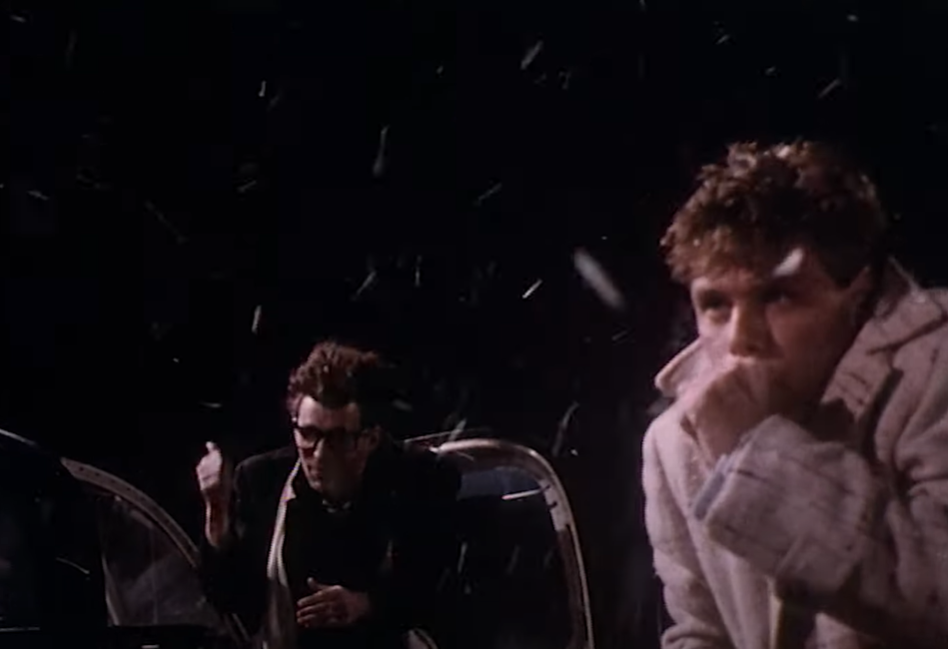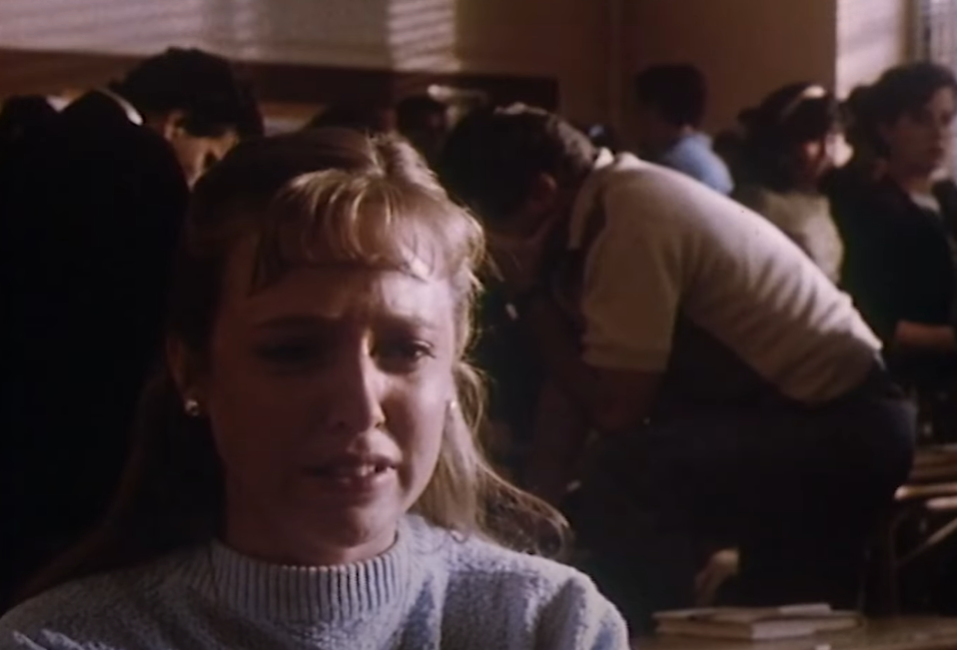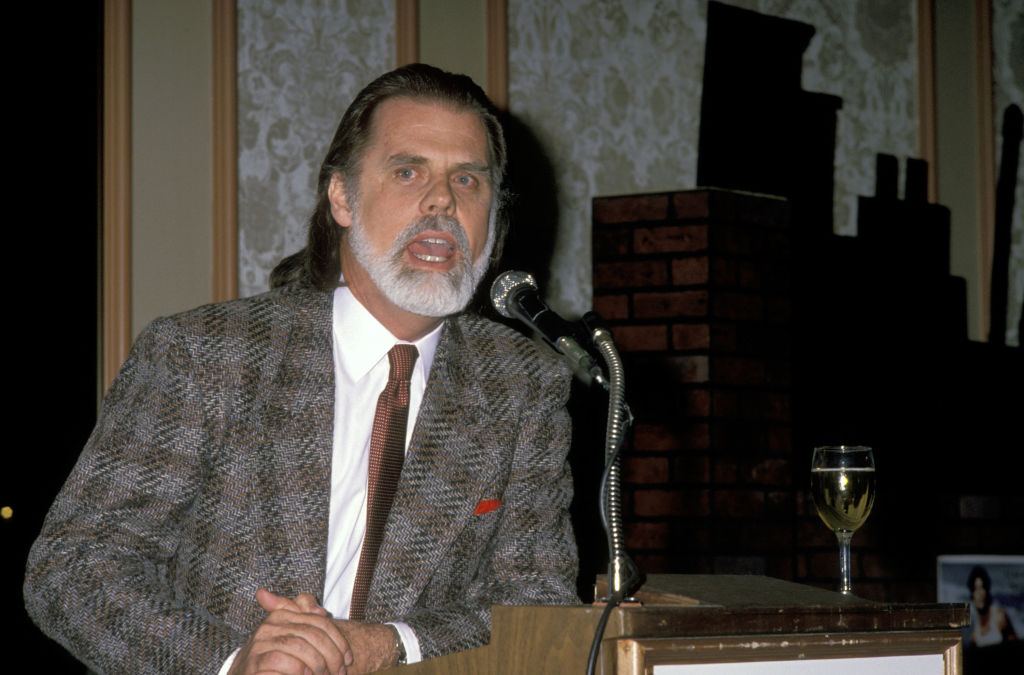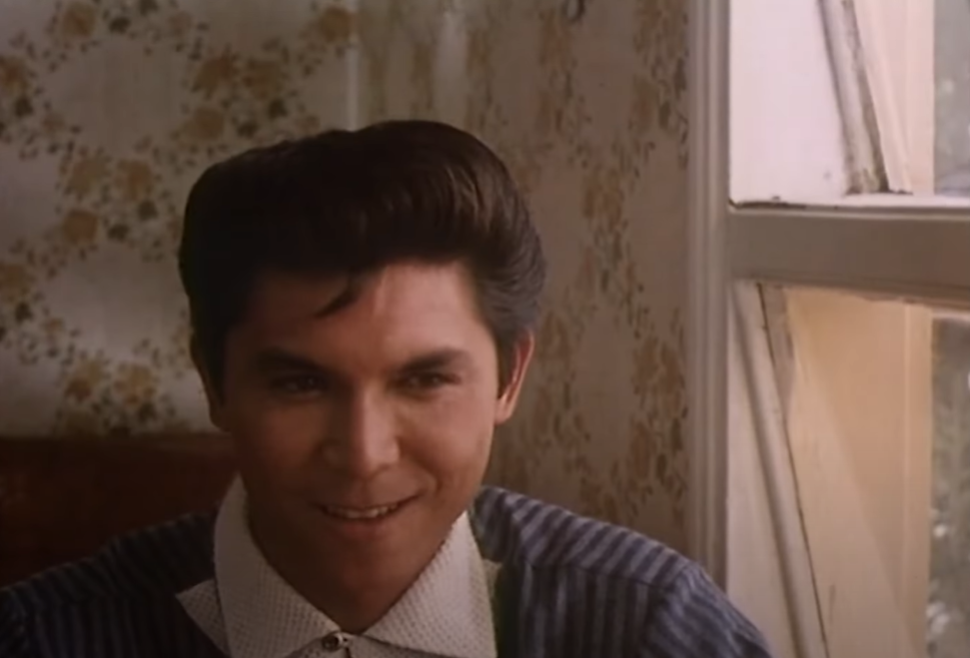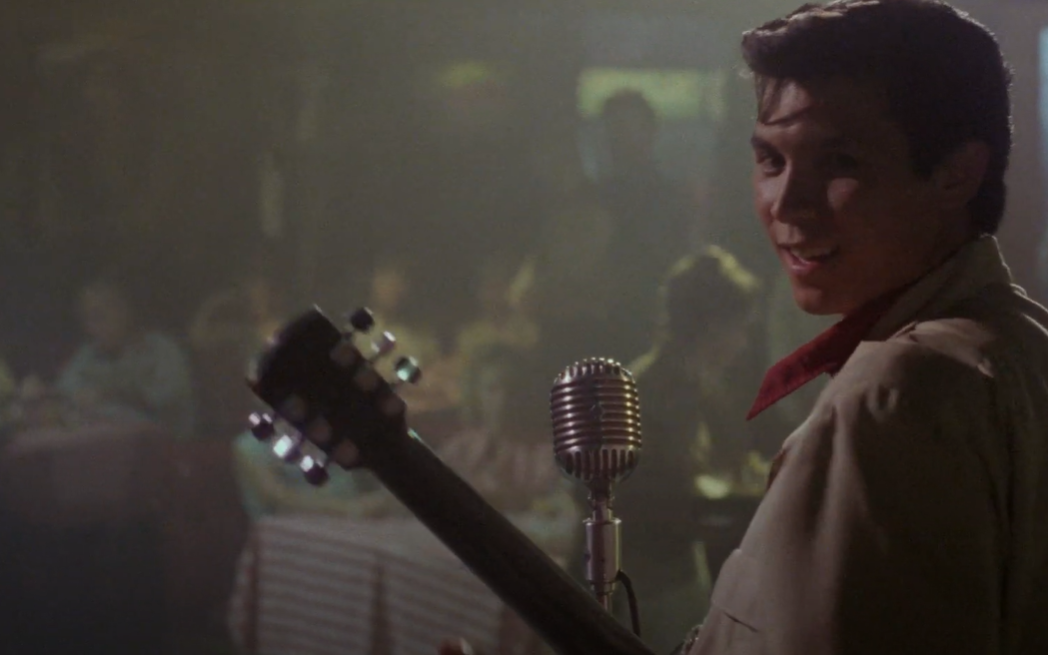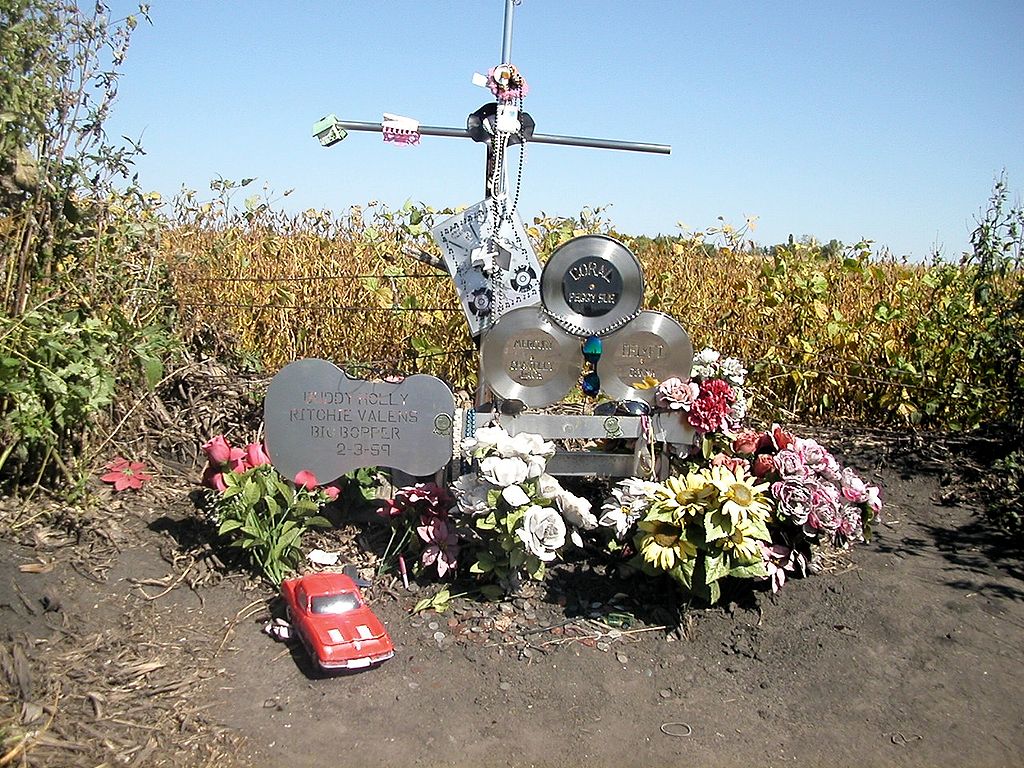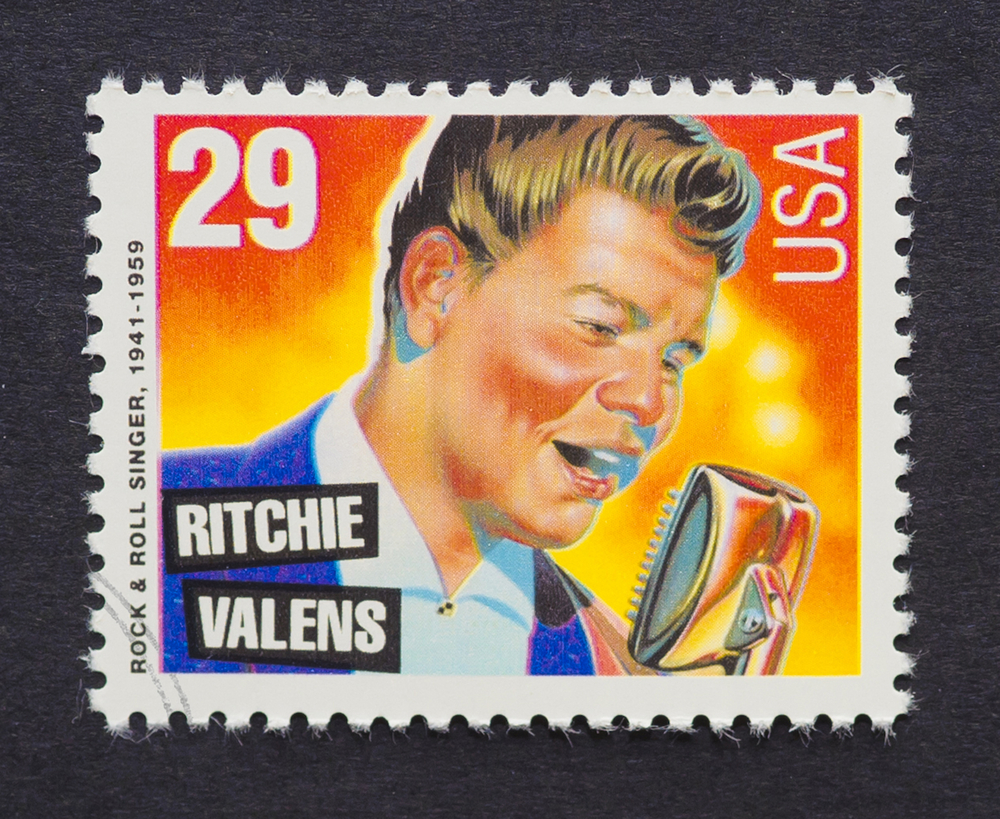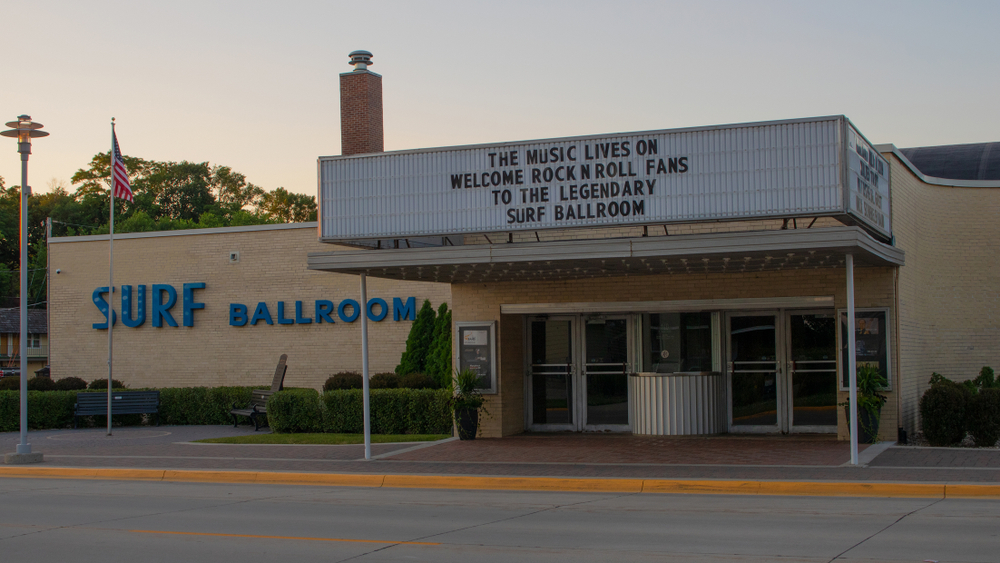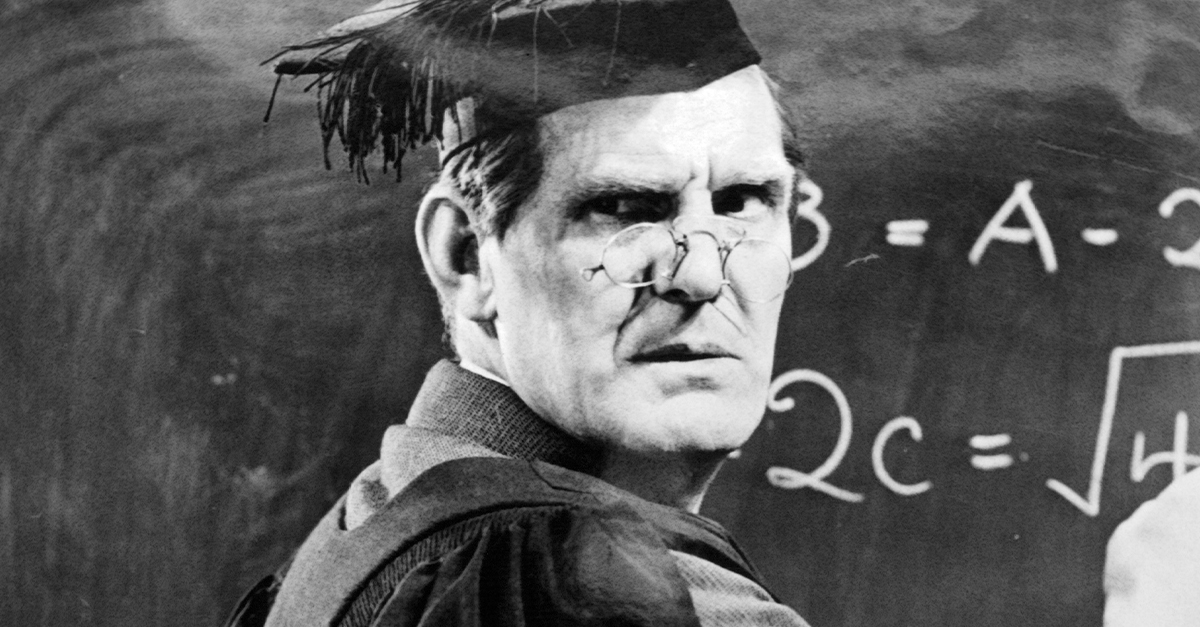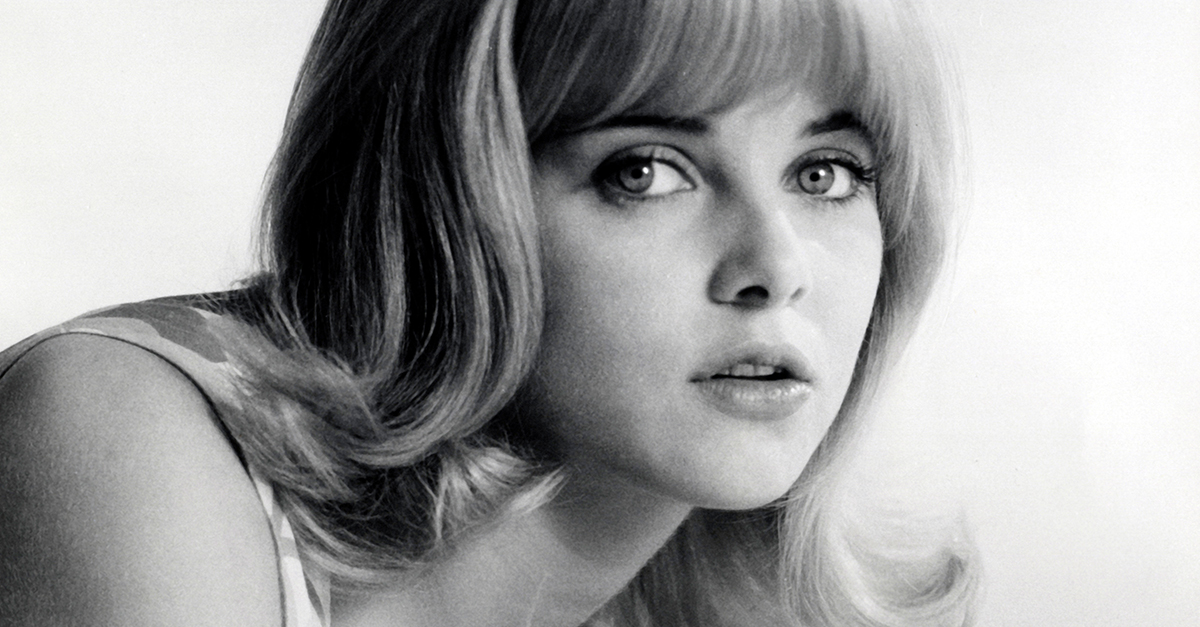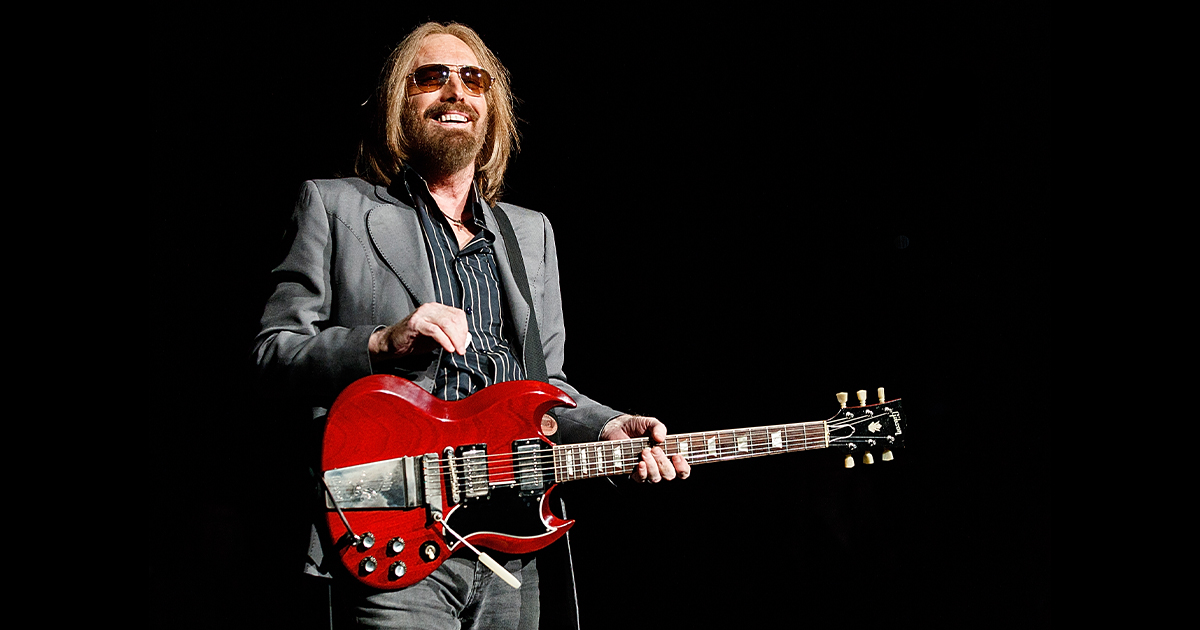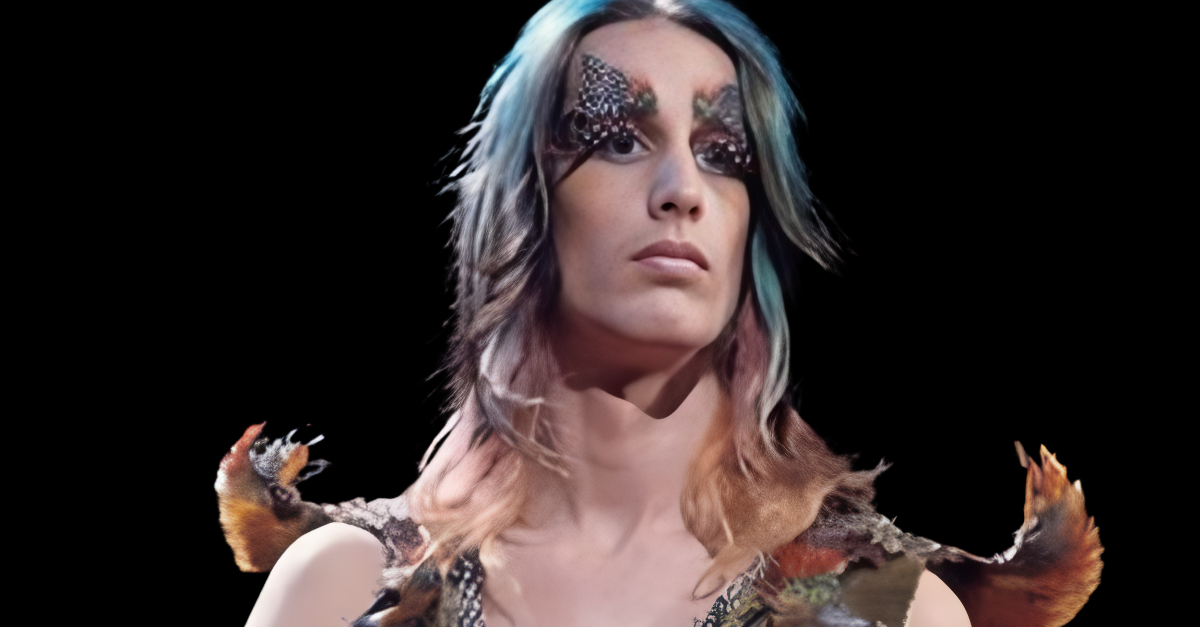The Real Life La Bamba
Seventeen-year-old Ritchie Valens had a huge singing career ahead of him—until a simple coin toss brought it to a tragic end.
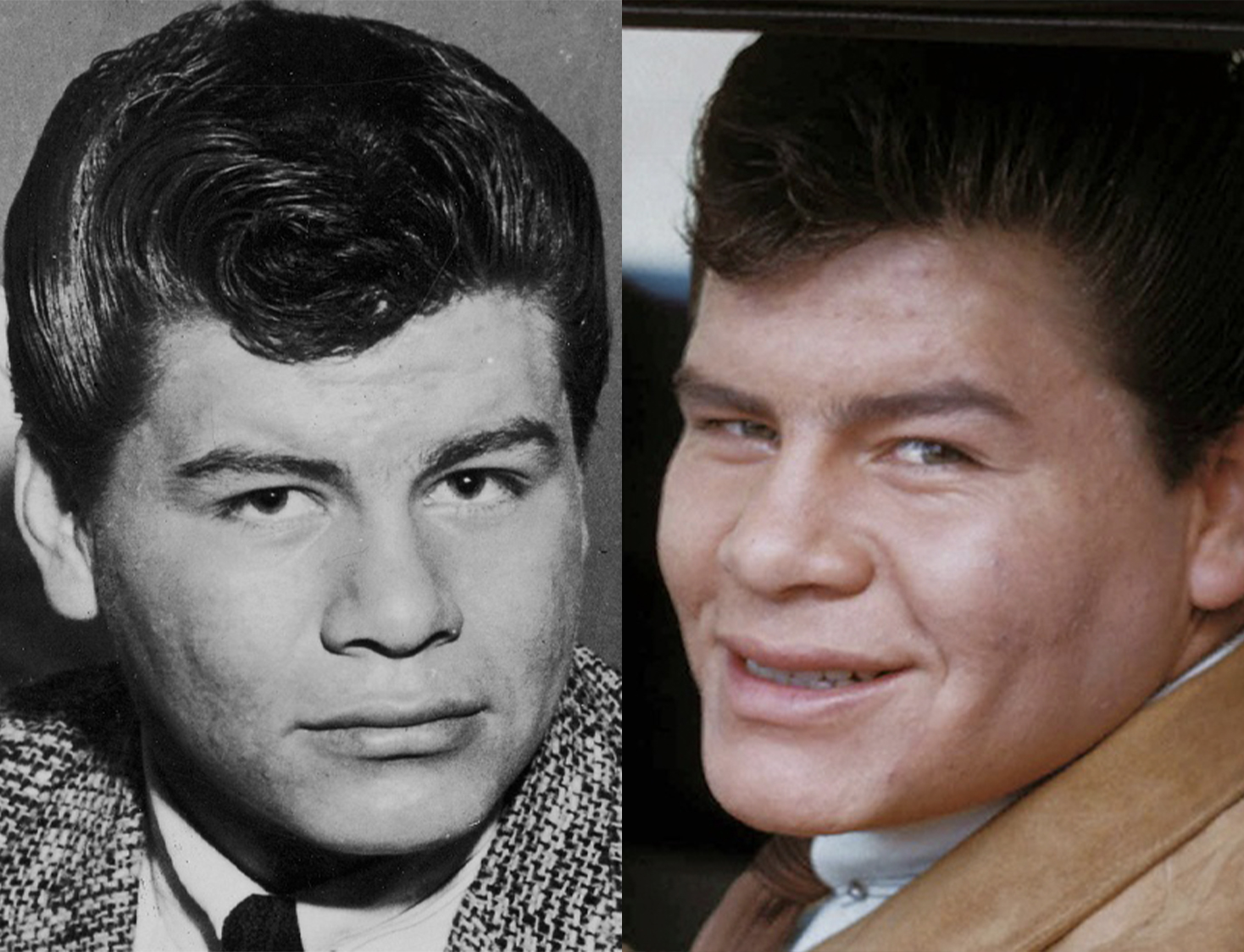
1. He Had A Fear
Ritchie Valens’ singing career lasted only eight months, but in that short time he achieved music legend status. Despite the fear of flying that had plagued him since he was a child, and with only a couple of hit records under his belt, he chose to board a small plane during a frigid Midwest snow storm.
Ritchie Valens wouldn't make it out of that plane alive—but what led him to that fateful moment? Let's find out.
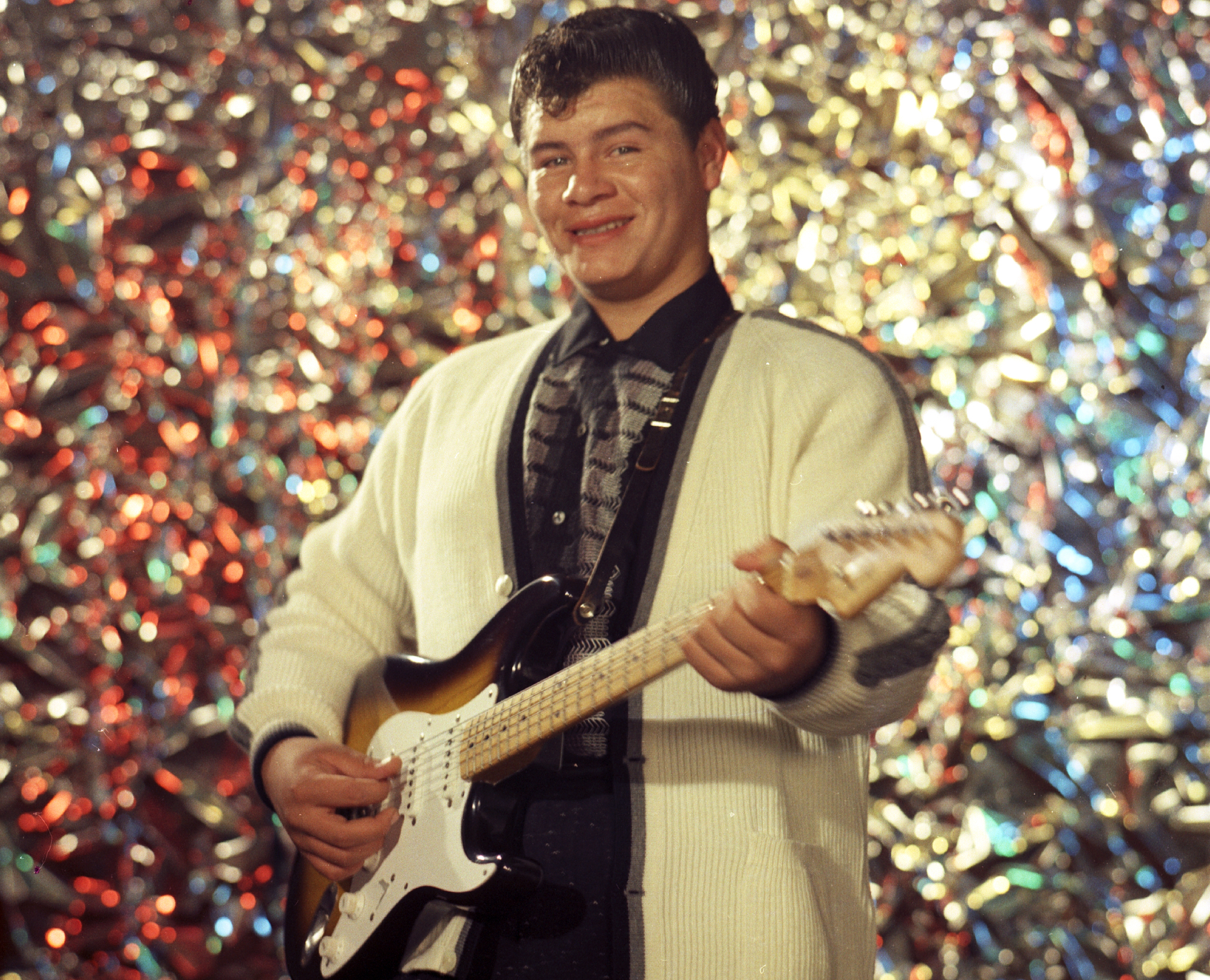 Michael Ochs Archives, Getty Images
Michael Ochs Archives, Getty Images
2. He Was Poor
Ritchie Valens was born Richard Steven Valenzuela on May 13, 1941 in the San Fernando Valley. His parents were poor immigrants from Mexico, who made their money picking fruit. He lived in a full house with his two younger sisters and two half-brothers, but the home wasn’t just full of people.
There was something else in there that caught Valens’ attention.
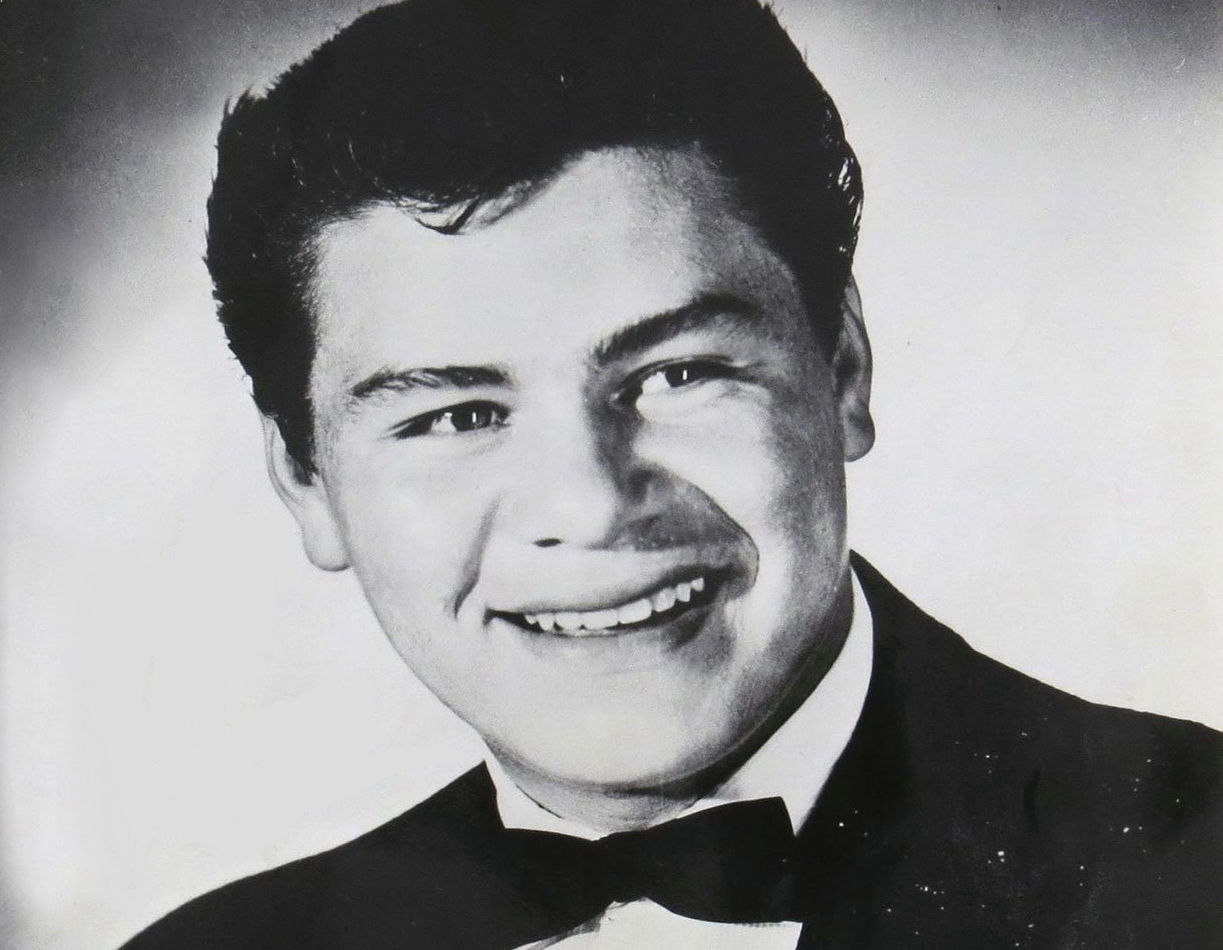 General Artists Corportation, Wikimedia Commons
General Artists Corportation, Wikimedia Commons
3. There Was Music
The Valenzuela house was full of music. There was traditional mariachi music from their native Mexico, but the family also enjoyed flamenco, and R&B. Back then there was no rock and roll, but even as a toddler Valens was taking in the different sounds he heard around him. By the tender age of five he was doing something incredible.
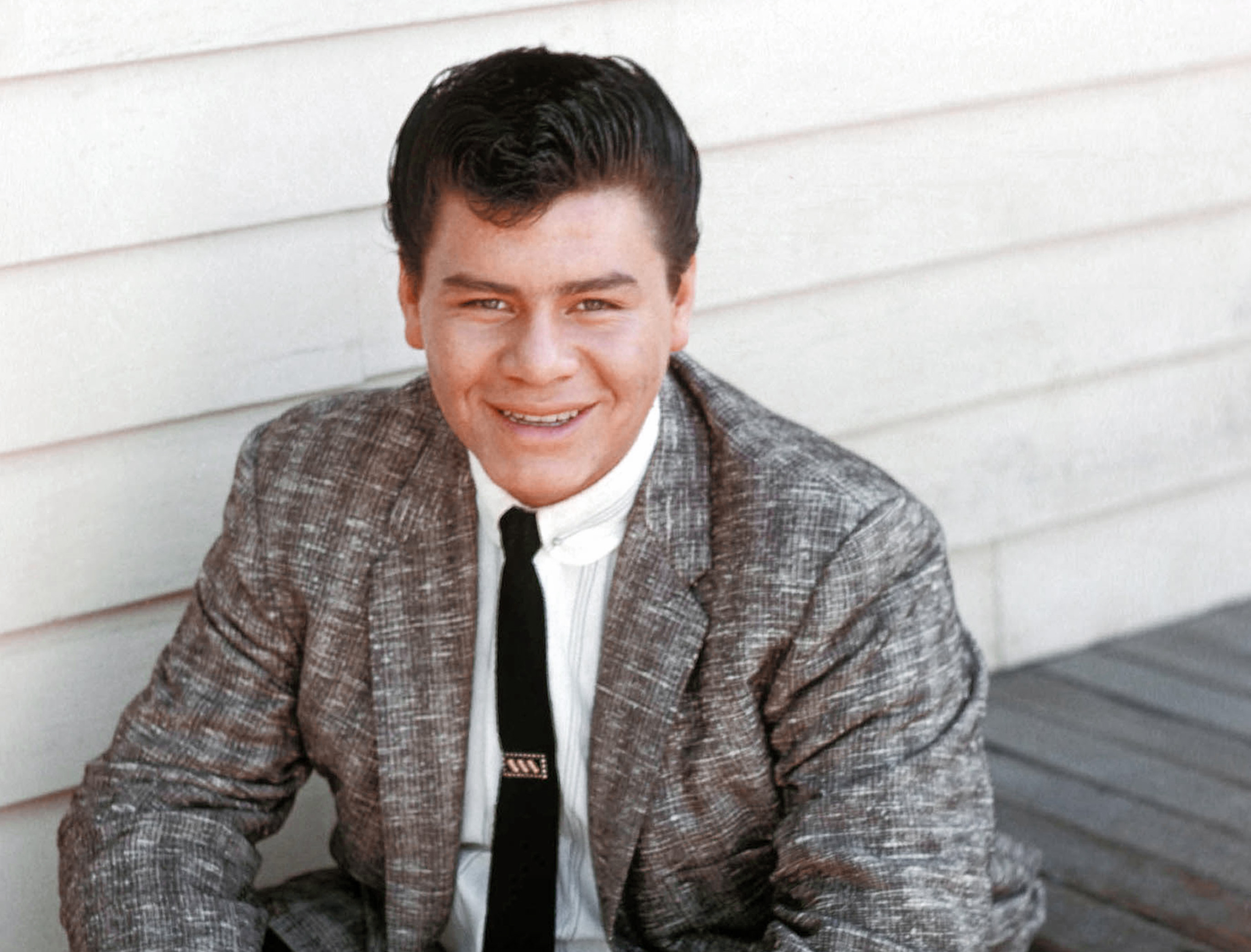 Donaldson Collection, Getty Images
Donaldson Collection, Getty Images
4. He Switched Over
At a very young age, Valens was already making his own music. When his parents recognized this, dad suggested he try the guitar. The only problem? Valens was left handed, but had a right handed guitar. It didn’t matter. He was so determined to learn to play that he went against nature and learned to play with his right.
Then he turned around and taught himself how to play the drums. By then, Valens had done enough learning: He was ready to be a star.
5. He Joined Up
Valens’ first performances were just for his friends, but before long, he received an offer. This was to join a band called The Silhouettes. No, this wasn’t the doo wop group who sang “Get A Job”. This was just a couple of kids making music in the San Fernando Valley.
They weren't famous, but being in this little band would eventually lead Valens to a fame he could never have imagined.
6. He Had A Nickname
With the Silhouettes, Valens soon earned a reputation as a talented musician around the Valley. A high school student was really taken by Valens’ talent, and they just had to tell Bob Keane of Del-Fi Records. While describing this talented young musician they went to school with, the student referred to Valens by a nickname that really caught Keane’s attention.
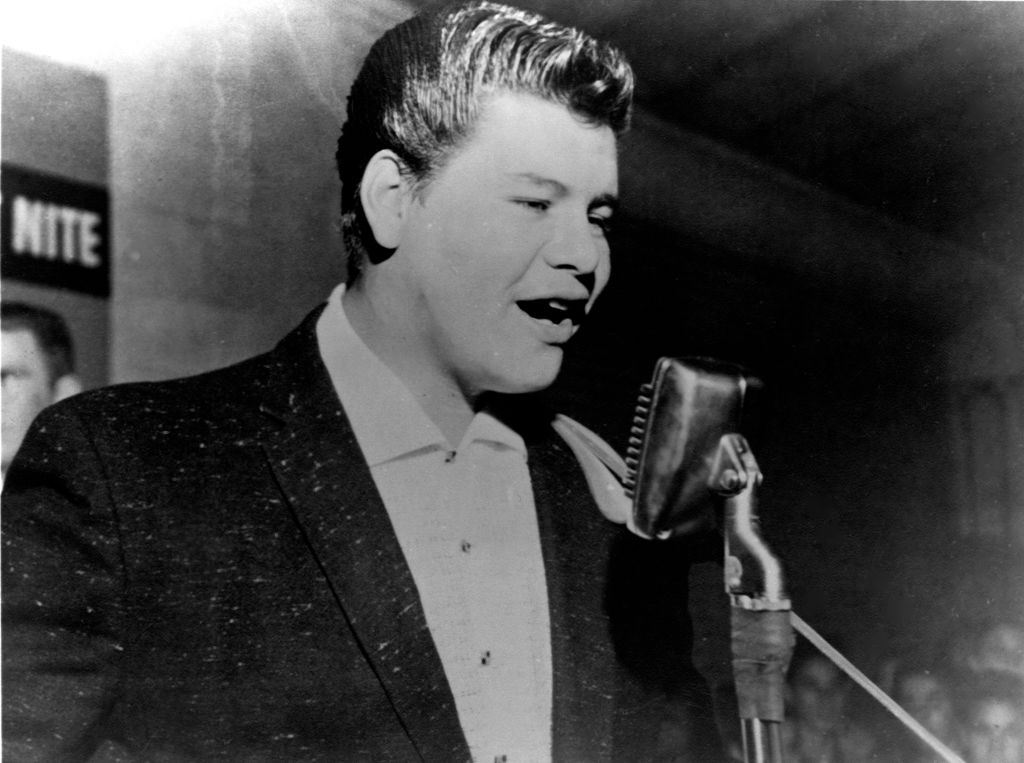 Michael Ochs Archives, Getty Images
Michael Ochs Archives, Getty Images
7. He Impressed Him
Kids in the San Fernando Valley had taken to calling Valens “the Little Richard of San Fernando”. Now. Bob Keane was an important man who wasn't in the habit of taking tips from high school students, but Valens’ nickname intrigued him.
Keane decided see for himself, and attended a weekend matinee at a movie theatre with Valens on the ticket. Valens didn't know it, but that show was going to change his life forever—and start a clock ticking.
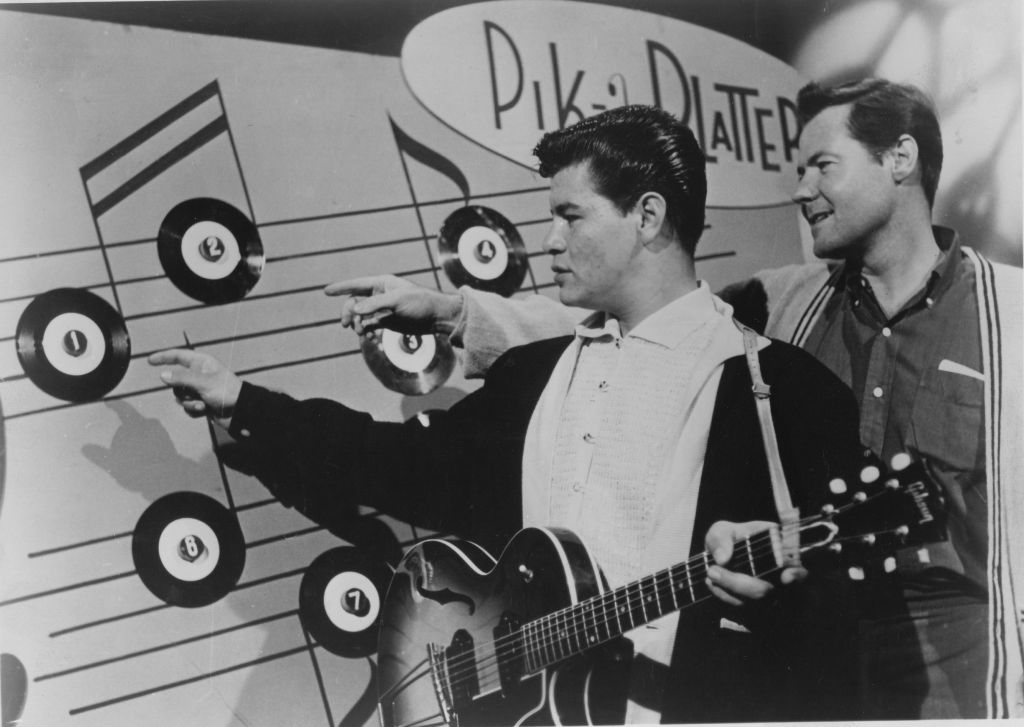 Michael Ochs Archives, Getty Images
Michael Ochs Archives, Getty Images
8. He Took Him Home
After seeing Valens perform just once, Keane invited him directly to his home. As it turned out, Keane had a little recording studio right there in his basement. Valens did a short audition and that was enough. Keane signed Valens on to his record label on May 14, 1958. It was in that basement studio that Valens and Keane got down to work.
What they created would go down in rock and roll history.
9. He Got It From His Mom
The first song Valens and Keane created was “Come On Let’s Go” and it got its name from an unusual source. Apparently Valens’ mom was fond of the line. She often used it when the family was running late. Valens used his mother’s words to pay a cute little tribute to her.
Family was clearly a great resource for Valens—but he was about to have to turn his back on them.
10. There Was A Problem
Valens and Keane were very happy with “Come On, Let’s Go,” and Keane wasn't going to waste any time releasing it. But first, he had one problem to clear up. It was his new star's name. At this time, Valens was still going by Richard Valenzuela. Keane thought it sounded "too ethnic".
Valens reluctantly agreed, but then Keane came up with another problem.
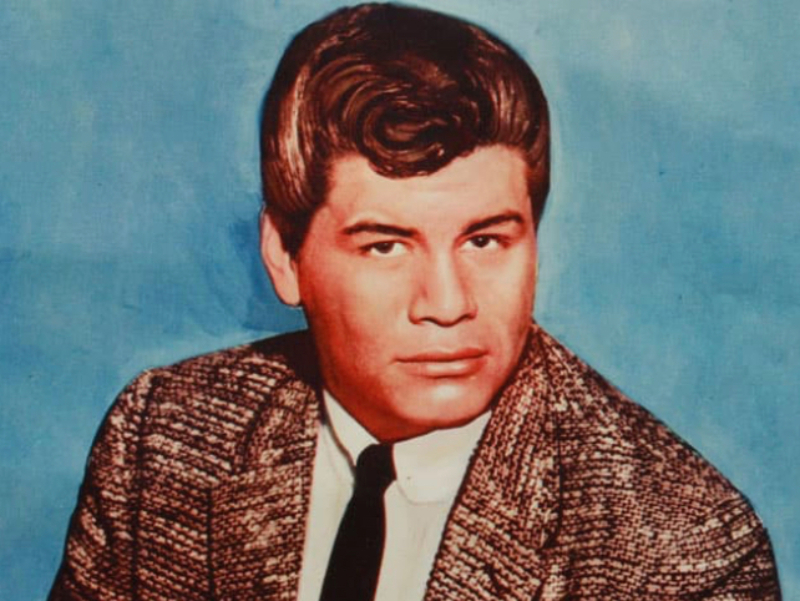 Hal Roach Studios, Wikimedia Commons
Hal Roach Studios, Wikimedia Commons
11. There Were Too Many
Valens understood why he had to change his last name, but Keane even had a problem with his first name. According to Keane there were too many other “Richards” in the music industry—Little Richard being one of them—and he wanted Valens to seem fresh. From this came Ritchie Valens, and a star was about to be born.
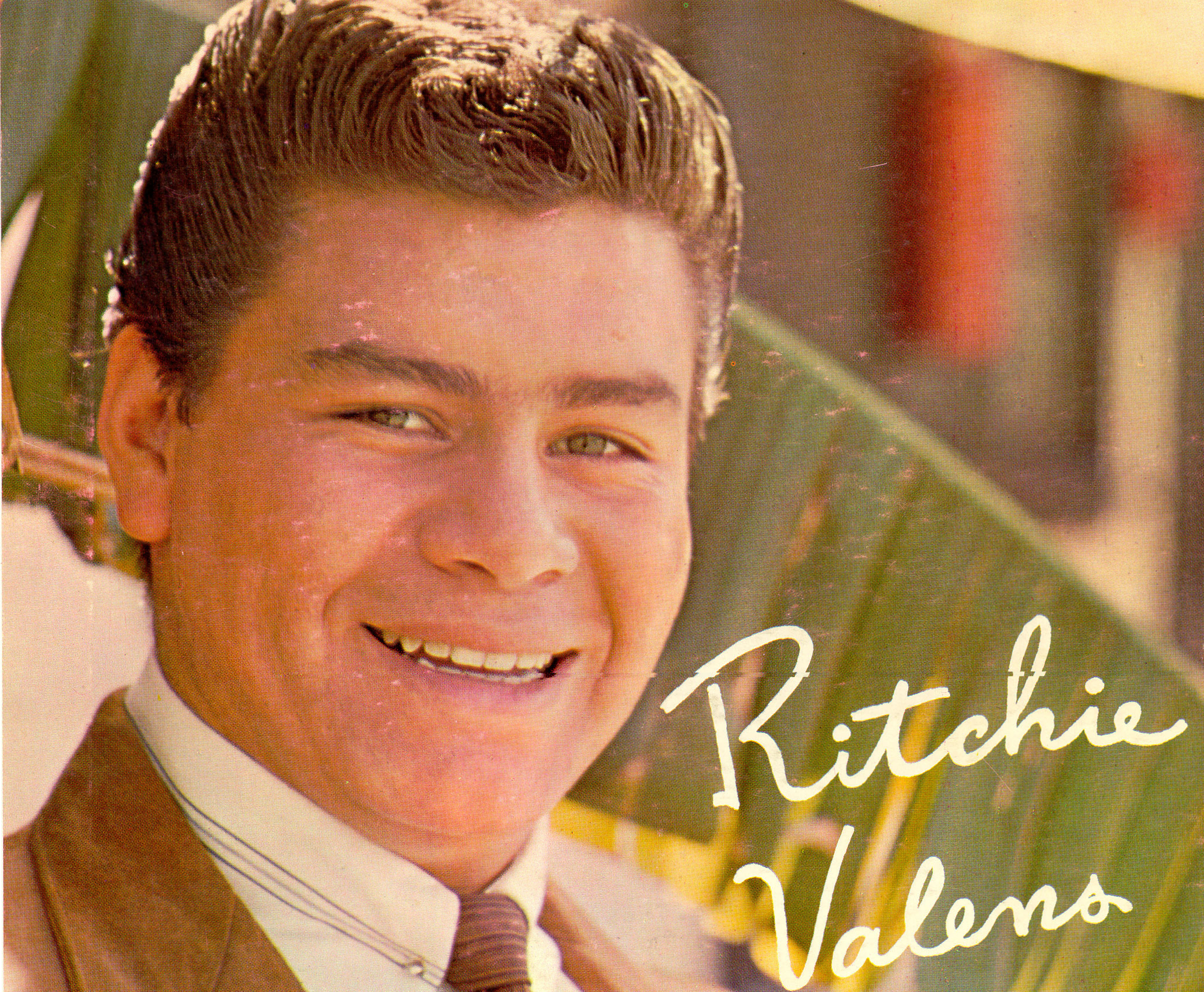 Michael Ochs Archives, Getty Images
Michael Ochs Archives, Getty Images
12. He Had A Painful Story
Just days after Valens and Keane recorded “Come on, Let’s Go," they released it to the public. The song was a hit, and Keane ride the wave with a quick follow-up record. Valens needed to come up with material for a song that was personal, so he took his inspiration from his own life.
He’d had a heartache, and he wanted to sing about it.
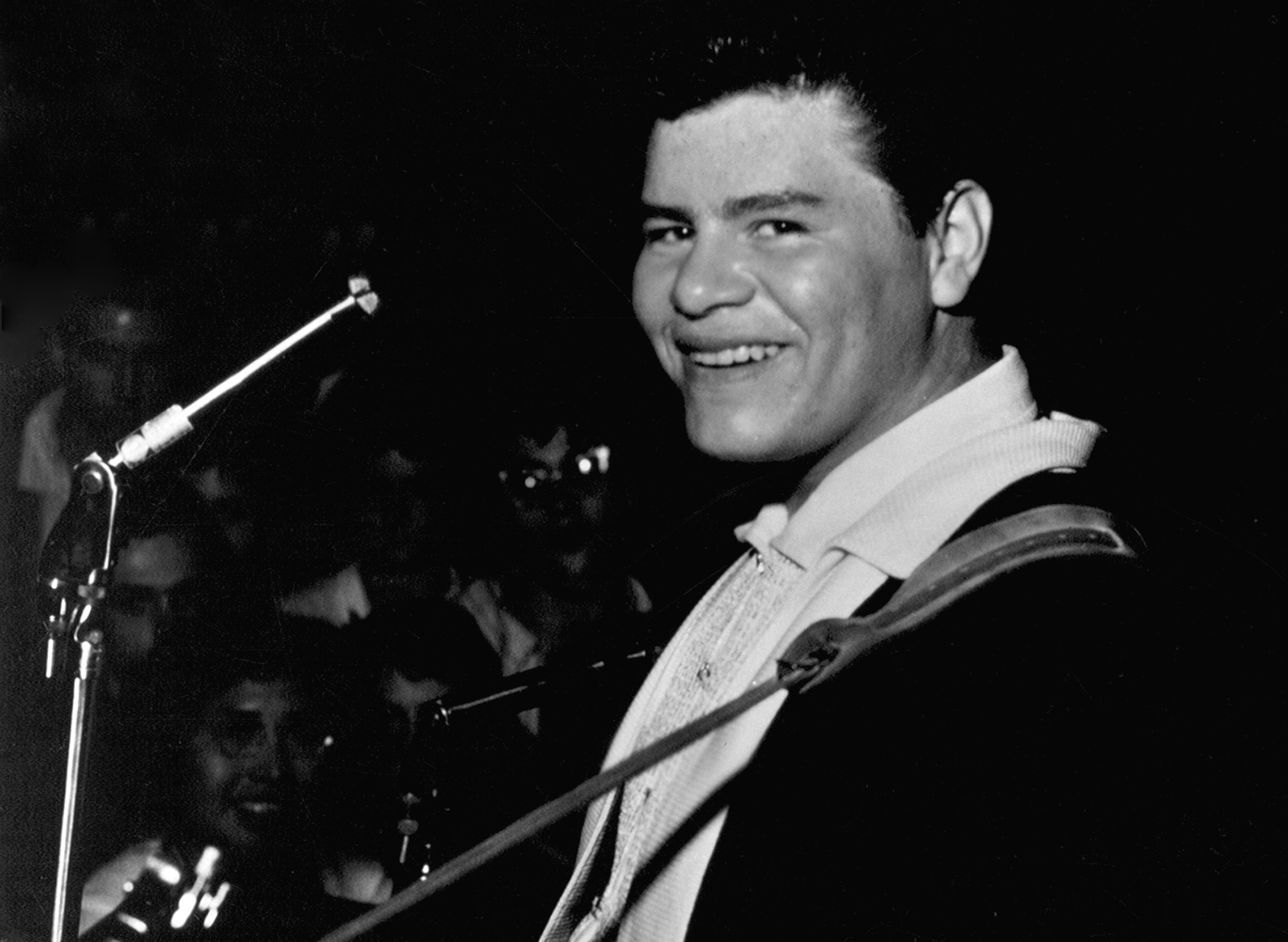 Michael Ochs Archives, Getty Images
Michael Ochs Archives, Getty Images
13. It Wasn’t Easy
Valens started dating a girl named Donna Ludwig when he was 16. Valens and Ludwig were high school sweethearts, and everyone thought they were star crossed. Sadly, their real relationship wasn't so simple. It wasn’t a problem with her, it was her father. There was something about Valens that Mr Ludwig did not like.
14. He Was A Good Guy
Donna Ludwig’s father had a problem with the fact that Valens was Hispanic. Likely, Ludwig’s father assumed he was a bad guy from the wrong side of the tracks. The irony was that Ludwig had chosen Valens as a boyfriend because he was such a good guy. Valens didn’t drink or swear and Dad, if he’d given him a chance, probably would have liked Valens.
Sadly, Valens didn’t catch a break from Ludwig’s father. But that only made his daughter want Valens even more.
15. They Hid It
Valens's girlfriend was a headstrong young woman. She wasn’t afraid of her father, so she ignored her father's wishes and dated Ritchie anyway—only she made him keep it a secret. Valens obviously wasn't happy with the situation, but it did help him write a hit song.
Donna Ludwig probably thought she just had a normal boyfriend—but he was about to show her how special he really was.
16. He Gave Her A Private Preview
Valens wrote the hit song “Donna” about his sweetheart, but before he let the public hear it, he wanted the real Donna to have a listen. He called her on the phone and gave her a very private sneak preview of the song. Ludwig later admitted that the song made her cry. But there was something about this song that Ludwig didn’t see coming.
17. She Had No Idea
Ludwig welled up with tears when she heard Valens sing “Donna”. What she didn’t understand was that this wasn’t a song just for her. At that time, she had no idea that Valens was recording “Donna” and making plans to release it to the world. Neither Valens nor Ludwig had any idea the effect this song would have.
18. He Looked To His Roots
Valens and Keane were happy with “Donna,” but now they needed a song for the B side. Valens had been toying with the idea of a rock n' roll version of a traditional Mexican song he knew from his childhood: La Bamba. He was nervous about releasing it, though, for fear that he might offend his Mexican fans.
And there was also another, maybe more serious, problem.
19. He Didn’t Speak It
Of course the Mexican song that Valens wanted to record had lyrics in Spanish. The thing was, Valens, born and raised in America, didn’t speak any Spanish. But drawing on his family, Valens got his mother’s relatives to teach him the words he needed to know to record the song. So, now “Donna” had “La Bamba” as a B-side.
Next, Valens and Keane had to wait and see if America would accept a rock and roll song that wasn’t in English.
20. He Made A Huge Decision
Neither of them expected what happened next: The disc with “Donna” on one side and “La Bamba” on the other went on to sell more than a million copies. It also received a gold disc from the Recording Industry Association of America.
The teenaged Richie Valens’ success was looking more and more inevitable. He was ready to make a decision, one that would mean he could never turn back from a career in music.
21. He Quit
Most young people see a good education as a necessity for making it in the world. Valens was becoming more and more sure that his future was in music, so he made a drastic decision. He quit high school. Valens had put all his eggs into one basket. As it turned out, Valens had to say goodbye to more than just high school.
22. He Walked Away
When Valens walked away from his education, he was also walking away from his girlfriend Donna. The teenage couple took a mature approach and decided to keep their relationship open. Valens plan was to marry her one day, but first he had to pursue his dream of superstardom.
Valens may have had a few hit songs on the radio, but he still had to show America that he could do a live performance.
23. It Was A Huge Audience
One of Valens' first performances reached an astoundingly huge audience. This was on Dick Clark’s American Bandstand. On the show, Valens performed “Come On, Let’s Go” and earned a huge legion of fans. Based on this success, young Valens was soon off to Hawaii for the “11th Show of Stars” and New York City to appear with Chuck Berry, Bo Diddley, and The Everly Brothers.
Clearly, Valens was now in the big leagues—but his next performance would bring him right down to earth.
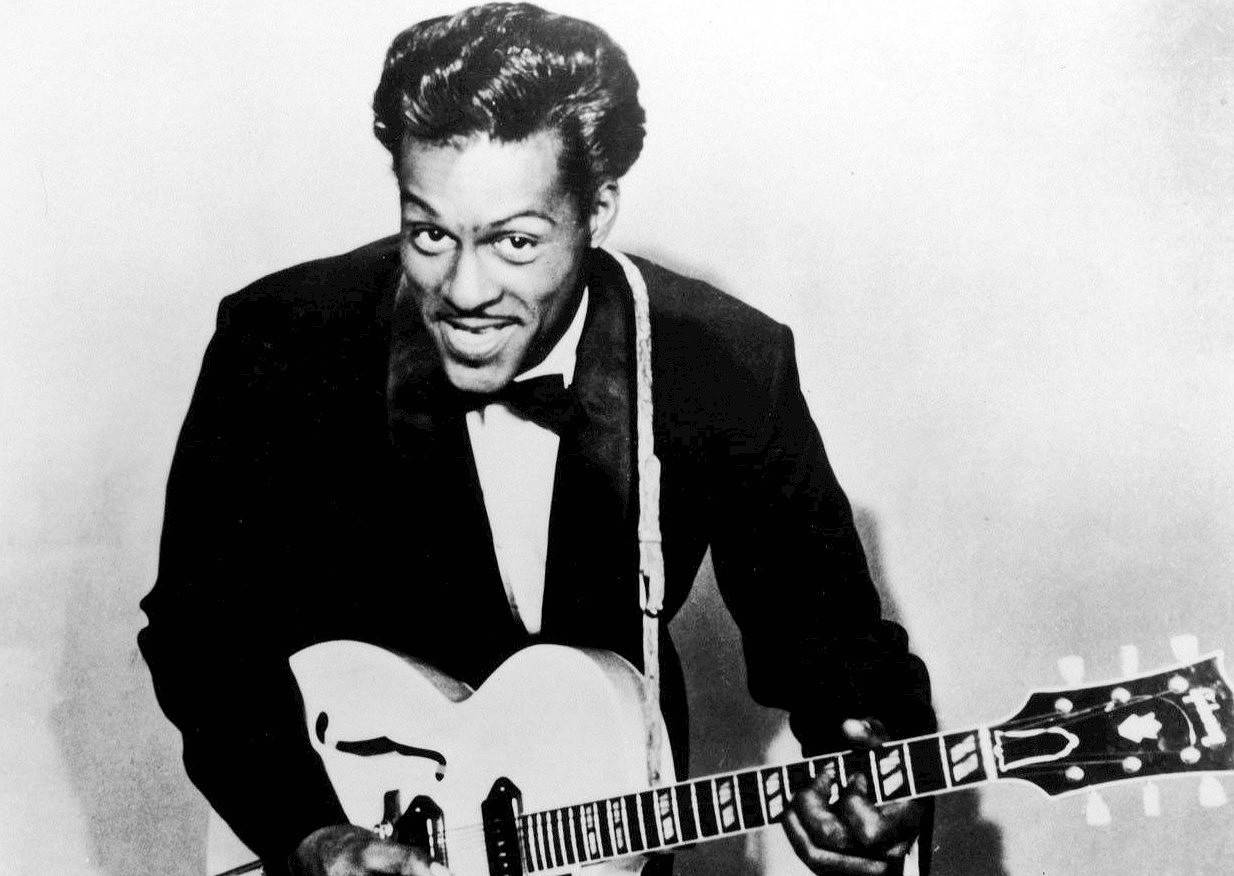 Universal Attractions, Wikimedia Commons
Universal Attractions, Wikimedia Commons
24. It Was Eerie
West Covina High School, just outside Los Angeles, must have an amazing fundraising committee. Somehow they managed to lure both Valens and singing star Sam Cooke to their event which they called “The Teen Canteen Fundraiser”. While the show itself didn’t go down in history, there was an eeriness to it.
In just a short time, both men would lose their lives in unnatural circumstances.
 RCA Victor Records, Wikimedia Commons
RCA Victor Records, Wikimedia Commons
25. He Was Sure It Would Be A Success
In 1959, Valens' manager booked him onto something called the “Winter Dance Party Tour”, which would be a 24-day tour of the American Midwest. The 17-year-old Valens was so sure that the tour would be a success that he decided to buy a house. Before setting out on the tour, he put down a cool grand as a down payment.
But Valens would soon realize that there was something very wrong with this tour.
26. There Were Two Problems
The “Winter Dance Party Tour” seemed simple enough at the beginning, but it soon became clear that there were two things very wrong with it. The first problem with the tour was with geography. You see, the person responsible for booking the cities didn't seem to own a map and managed to book the cities so far apart that it meant driving for hours between gigs.
The second problem was something even worse.
27. It Was Cold
The next problem was the weather. Not only was it winter, it happened to be one of the coldest winters in many years. So now we have a bus load of popular musicians, crisscrossing the midwest for hours on end, in extremely cold temperatures. While this may not be exactly a recipe for disaster, a disaster is what happened.
28. There Wasn’t Room
Buddy Holly was probably the biggest star on the tour, and he found the cold temperatures and long bus rides unbearable. Partway through the tour, a fed-up Holly booked a private plane to get to their next gig, but there was only room for three passengers on board. Holly hand-picked the tour members he’d take on the plane, which meant Valens, the kid of the tour, would be stuck once again sitting on a frozen bus.
Most likely, Valens was secretly relieved. You see, he had a very valid reason for staying away from planes.
 Brunswick Records, Wikimedia Commons
Brunswick Records, Wikimedia Commons
29. There Were two Crashes
Back in 1957, Valens had to miss a school day at Pacoima Junior High, but this absence may have saved his life. That same day, a plane crashed into the school and eight people lost their lives, while 75 more sustained injuries. Then, just a few months later another plane crashed near Valens’ home. This one landed on a house and everyone on board perished.
This installed in Valens an intense fear of flying—which makes what happened next all the more tragic.
30. It Was A Magical Night
So that night Buddy Holly planned to board the small plane with two members of his band after their concert in Clear Lake, Iowa. The show was a hit, and Valens, maybe still high from a great concert, did something out of character: He asked one of the guys for his seat on the plane.
They decided to let a coin toss decide, and Valens won.
 Innovisions, The Buddy Holly Story (1978)
Innovisions, The Buddy Holly Story (1978)
31. He Was Young
It was 1:30 in the morning when Valens, Holly, and JP Richardson, aka the Big Bopper, reached the snowy airport. When they got in the small plane, there in the pilots’ seat was 21-year-old Roger Peterson. He was young—really young for a pilot. Legally, Peterson was one hundred percent certified to fly the plane, but there was something quite important he did not have the experience to do.
32. He Had Failed A Test
The thing was, Peterson was only certified for flying in circumstances where he could actually see where he was going. The flight with Valens was in the dark and with snow falling. With these conditions, Peterson would have to rely solely on his controls. And it gets worse.
Nine months before this day, Peterson had failed a practical exam for doing this very thing. So there was Valens, terrified of flying and about to go airborne with an inexperienced pilot, in bad weather, and in almost complete darkness.
33. It Happened Just After Take Off
The plane carrying Valens, Holly, and Richardson tragically crashed not long after take off. Later, they said it was due to bad weather and pilot error. The next morning, at around nine AM, they found the airplane, which had come to rest barbed wire fence, smashed into the shape of a ball. The pilot’s body was still in his seat. But something was missing.
Strangely, there was no sign of Valens, Holly or Richardson.
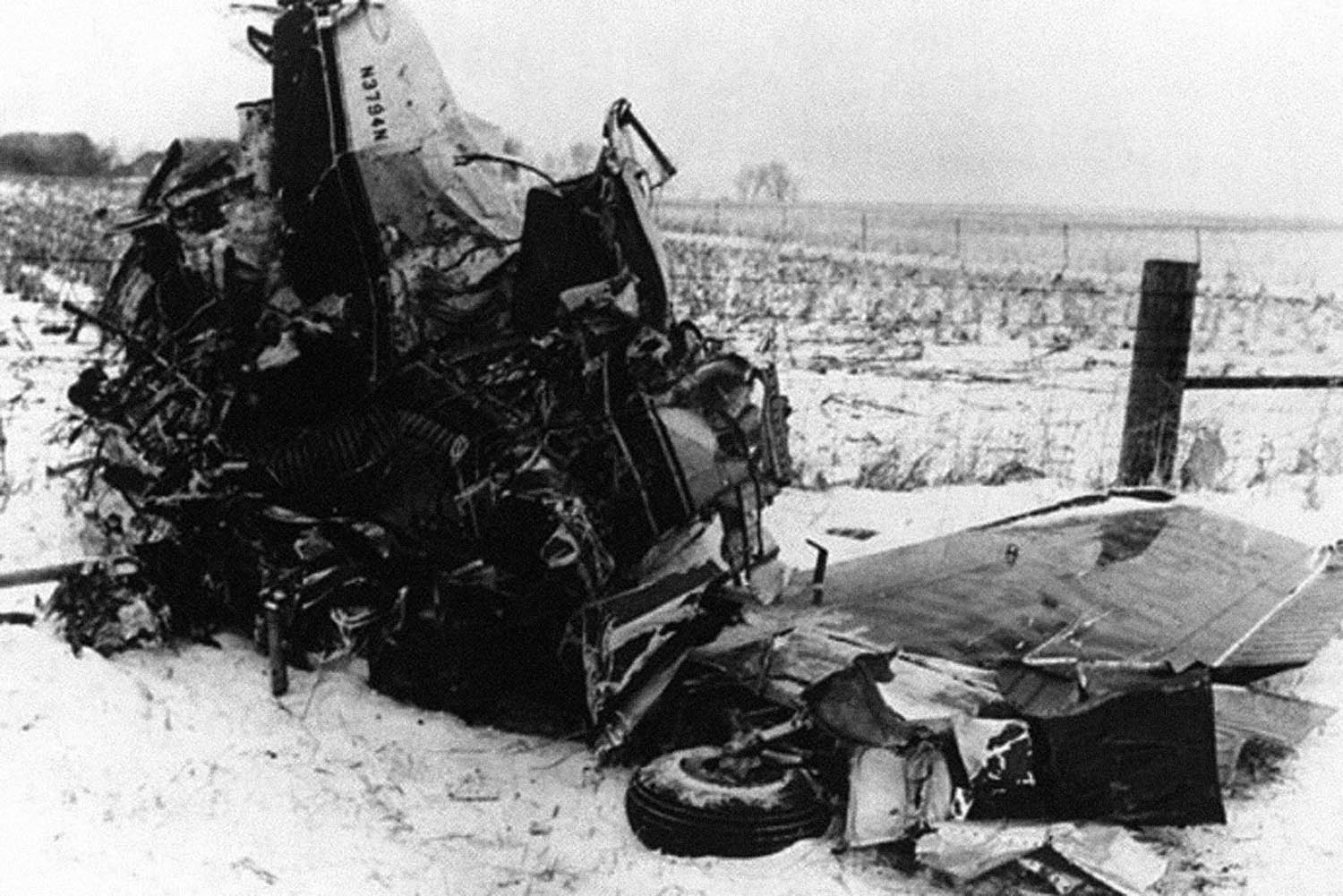 Civil Aeronautics Board, Wikimedia Commons
Civil Aeronautics Board, Wikimedia Commons
34. They Froze
The plane’s impact with the ground threw Valens, Holly, and Richardson clear of the wreckage. Of course this didn’t save their lives. In the hours before they found the plane, the three bodies had frozen solid. The tour manager had the grisly job of identifying them only by their clothes.
Three musicians lost their lives that day, but Valens career would strangely continue to soar.
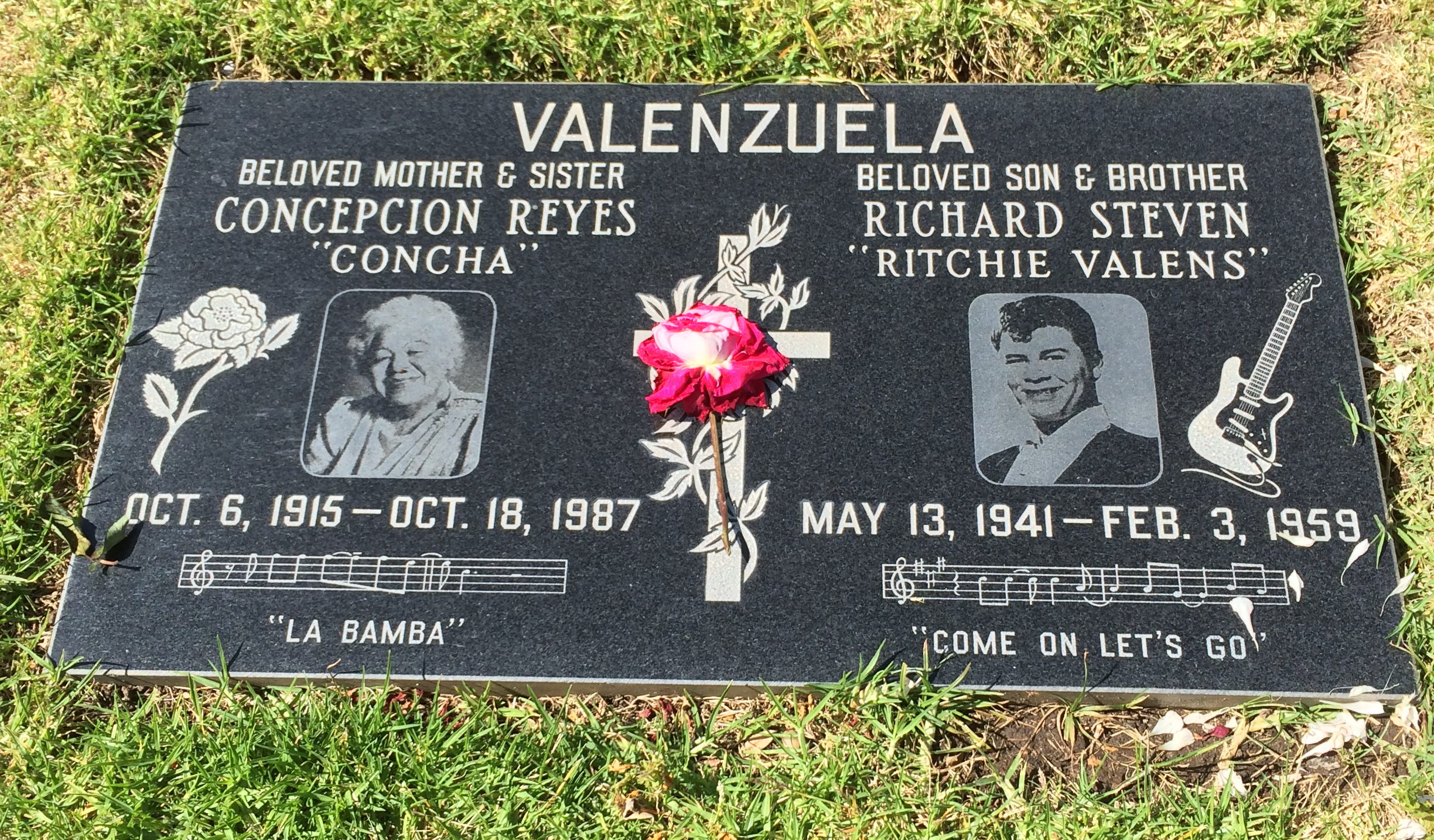 Arthur Dark, Wikimedia Commons
Arthur Dark, Wikimedia Commons
35. It Was Just A Simple Tape Recording
This tragic accident devastated Valens’ fans. Once reality had set in, they mobilized and tried to quench their thirst for absolutely any more recordings of their rock and roll hero. Valens’ manager Keane suddenly remembered that a recording existed, and he was sure it was the only recording of Valens singing live in front of an audience.
He just had to get his hands on it.
36. He Went Back
Back when Valens was first finding success as a musician, he got a call to perform at his old junior high school, Pacoima. During the concert, someone decided to record Valens using a very rudimentary tape recorder. Keane remembered that recording, found it, and released it as part of the live side of a posthumously released album.
The fans were happy to have even one recording. What happened next made them even happier.
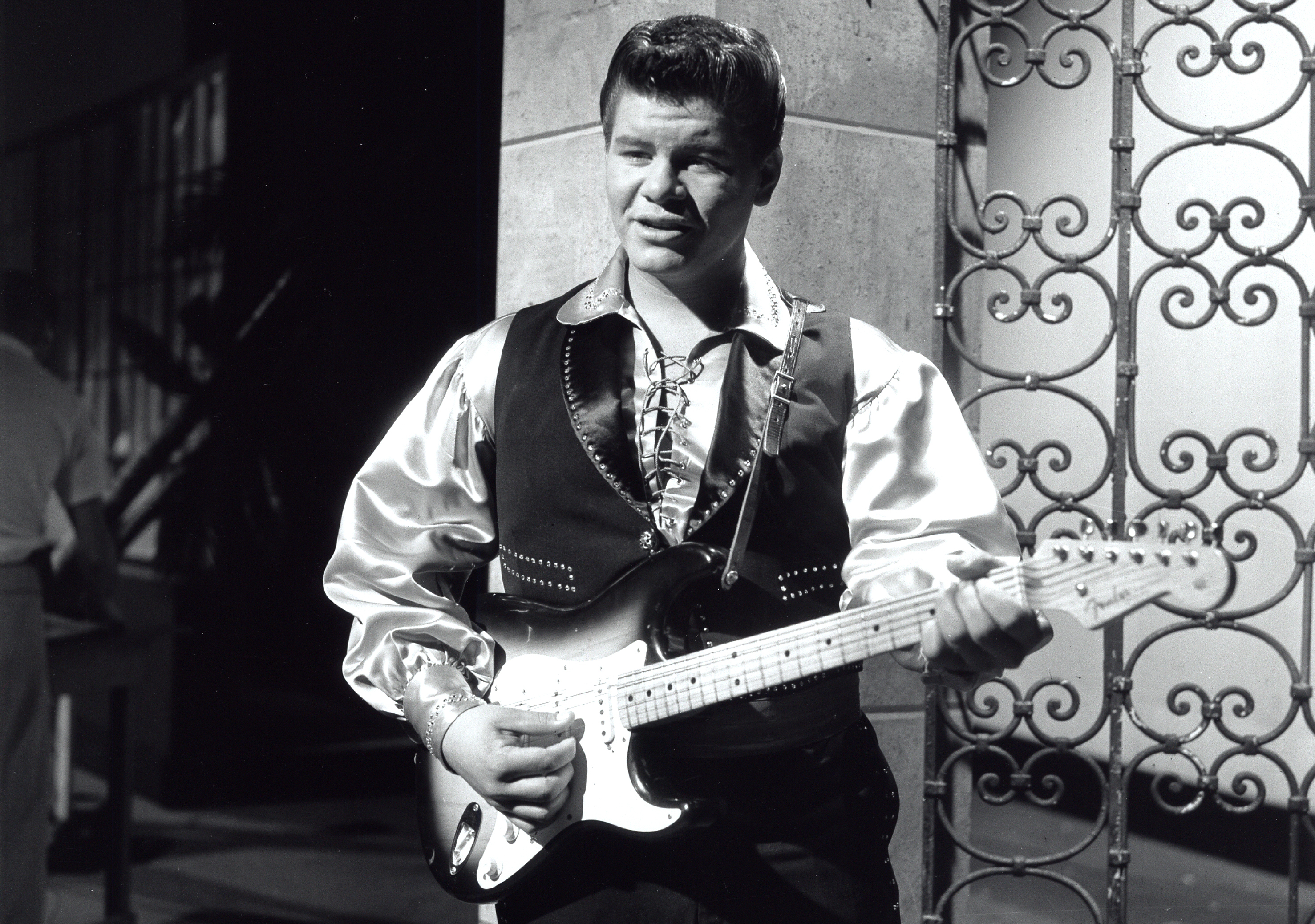 Michael Ochs Archives, Getty Images
Michael Ochs Archives, Getty Images
37. He Was On Film
Valens’ fans were getting used to the fact that they would never see their hero again. They then realized they would have one last chance. You see, just before the tragic plane crash, Valens had made a brief appearance in a movie. This was Go, Johnny Go!, where Valens performs his song “Ooh, My Head”. The film premiered just a few months after the accident, and came out in droves.
If the audience listened closely to the lyrics, however, they would notice an chilling coincidence.
 Hal Roach Studios, Go, Johnny, Go! (1959)
Hal Roach Studios, Go, Johnny, Go! (1959)
38. He Sang A Strange Line
There's something ominous in Valens’ song for Go, Johnny Go!. One line in “Ooh, My Head” has Valens singing about there being no more “Peggy Sue”. Everyone would recognize that this was a reference Buddy Holly's sit song. The same guy who'd lost his life on that fateful flight. There really would be no more "Peggy Sue".
The eerie coincidences didn't stop there.
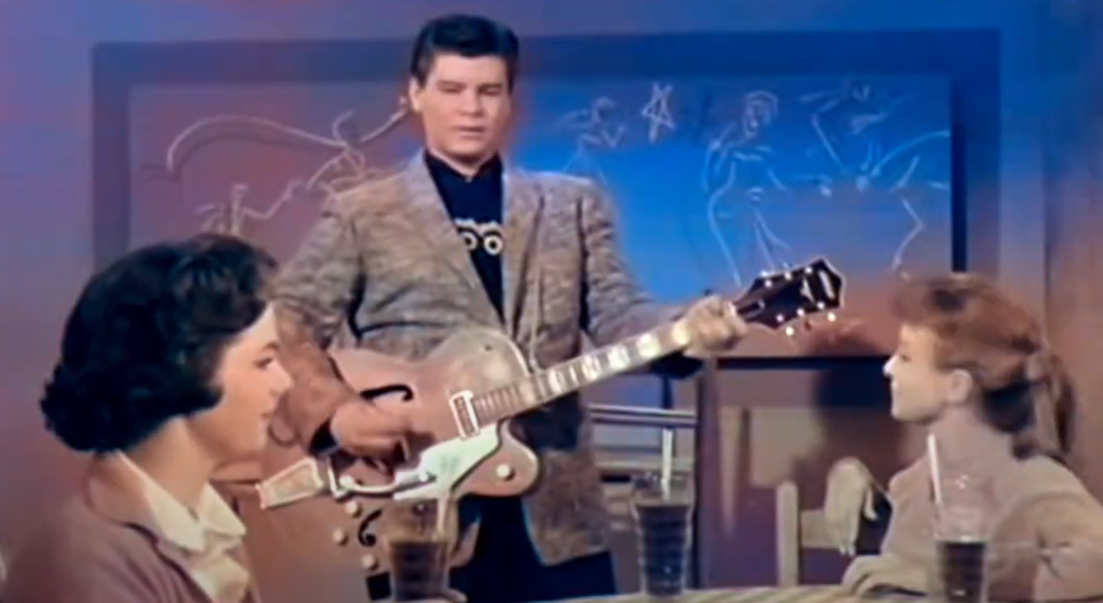 Hal Roach Studios, Go, Johnny, Go! (1959)
Hal Roach Studios, Go, Johnny, Go! (1959)
39. There Was A Strange Twist
In 1959, Tommy Dee wrote a tribute song called ”The Three Stars” about Valens, Holly, Richardson and the crash that took their lives. Later Eddie Cochran, who had appeared in Go, Johnny Go with Valens, recorded his own version of the song. In a strange twist of fate, Cochran too lost his life at an early age. Morbidly, the 21-year-old was in a car crash...on the way to the airport.
They say that time heals all wounds, but Valens’ fans seemed unable to get over their loss. By the late 1980s, their dedication was about to get a huge reward.
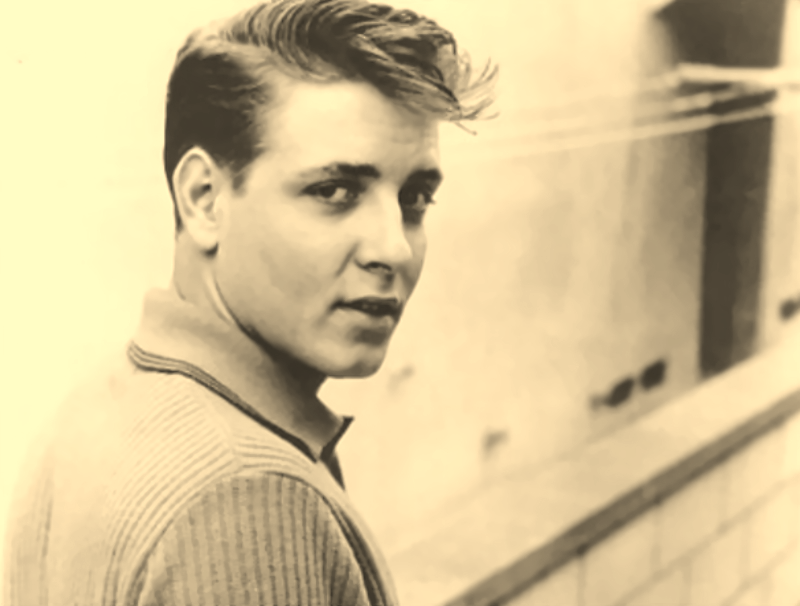 Liberty Records, Wikimedia Commons
Liberty Records, Wikimedia Commons
40. He Needed To Find Them
Even though Valens's career was short, music lovers seemed unable to forget him. In 1987, producer Taylor Hackford thought there was enough interest in Valens to make a movie about his short life and career. He sent his associate producer out to find Valens' family to see what they thought.
The strange thing was, it was as if the family had vanished into thin air.
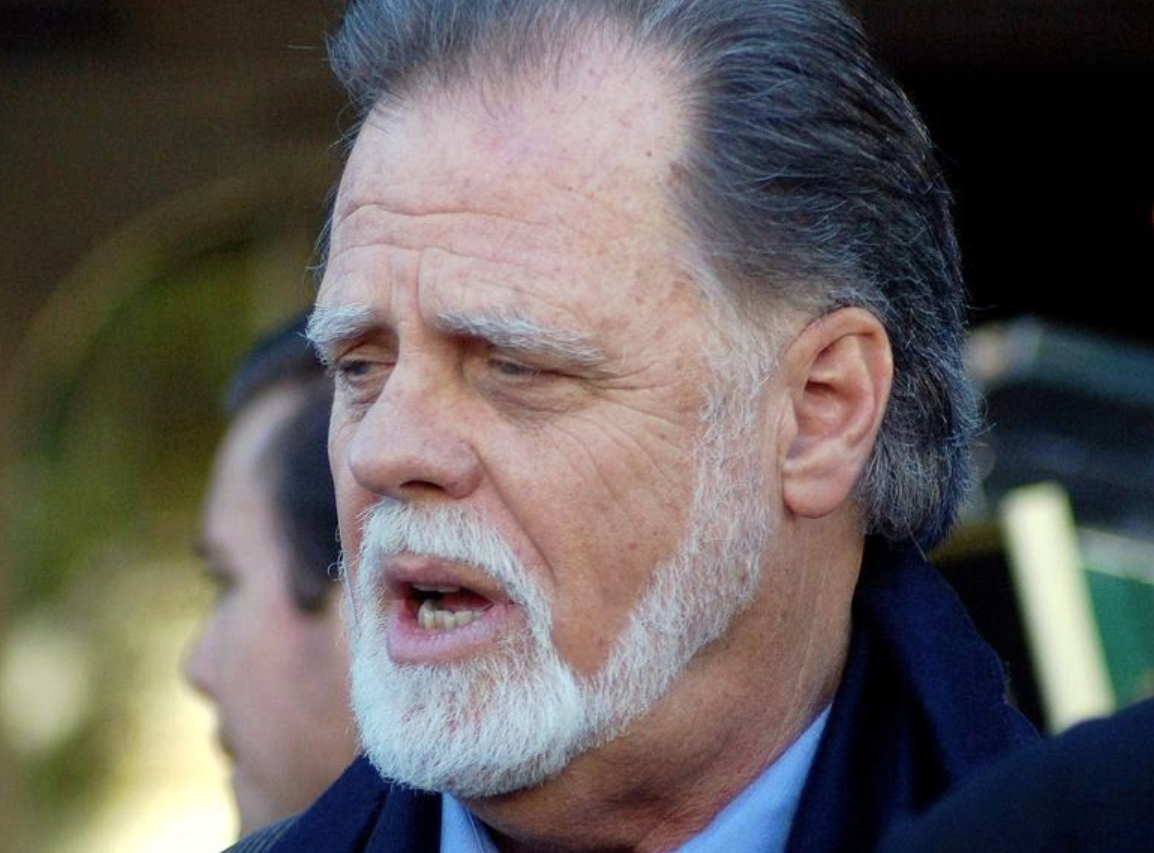 Angela George, CC BY-SA 3.0, Wikimedia Commons
Angela George, CC BY-SA 3.0, Wikimedia Commons
41. It Took Two And A Half Years
The story goes that the associate producer’s search for the family took two and a half years. He was likely ready to give up when he finally found them. In an ironic twist, it ended up they were living just a 15-minute drive from Hackford's home. Once he’d finally found Valens' family, he had to ask them a potentially delicate question.
Would they want their son’s tragic life to be the subject of a film?
42. They Got Close
The Valenzuela family certainly was on board with La Bamba, and especially with the man they cast as Valens. This was Lou Diamond Phillips, and while preparing for the role he got very close to the Valanzuelas. In fact, you can see Valens’ real-life mother in the film. She’s sitting beside Phillips—dressed up like Valens—at a Christmas party.
Adding Valens’ real life mom to La Bamba was a nice touch. But then things got a little too close for comfort.
43. She Begged
When it came time to shoot the scene with the plane crash, most of the Valenzuela family decided to stay away. Valens’ sister did attend the filming that day and found it very emotional.
When Phillips had to get on the plane, she begged him not to get on. She was sure that it would crash. Clearly the Valenzuela family needed closure on their loss. Well, they were about to get it.
44. They Came Together
Of course, Valens’ loved ones suffered an incredible loss and the families of Holly and Richardson did as well. The three families did not meet until an event in 1988 brought them all together. They erected a memorial statue that commemorated the tragic accident. Here, the families of all three entertainers—and also the pilot’s—met for the first time.
Long before this happened, a singer songwriter was also looking for some closure.
45. There Was A Song
Don McLean's song "American Pie" cemented "The Day The Music Died" into our popular culture forever. McLean saw something in this terrible tragedy wanted to make some sense of it. But what people forget is, the tragic plane crash was only the beginning.
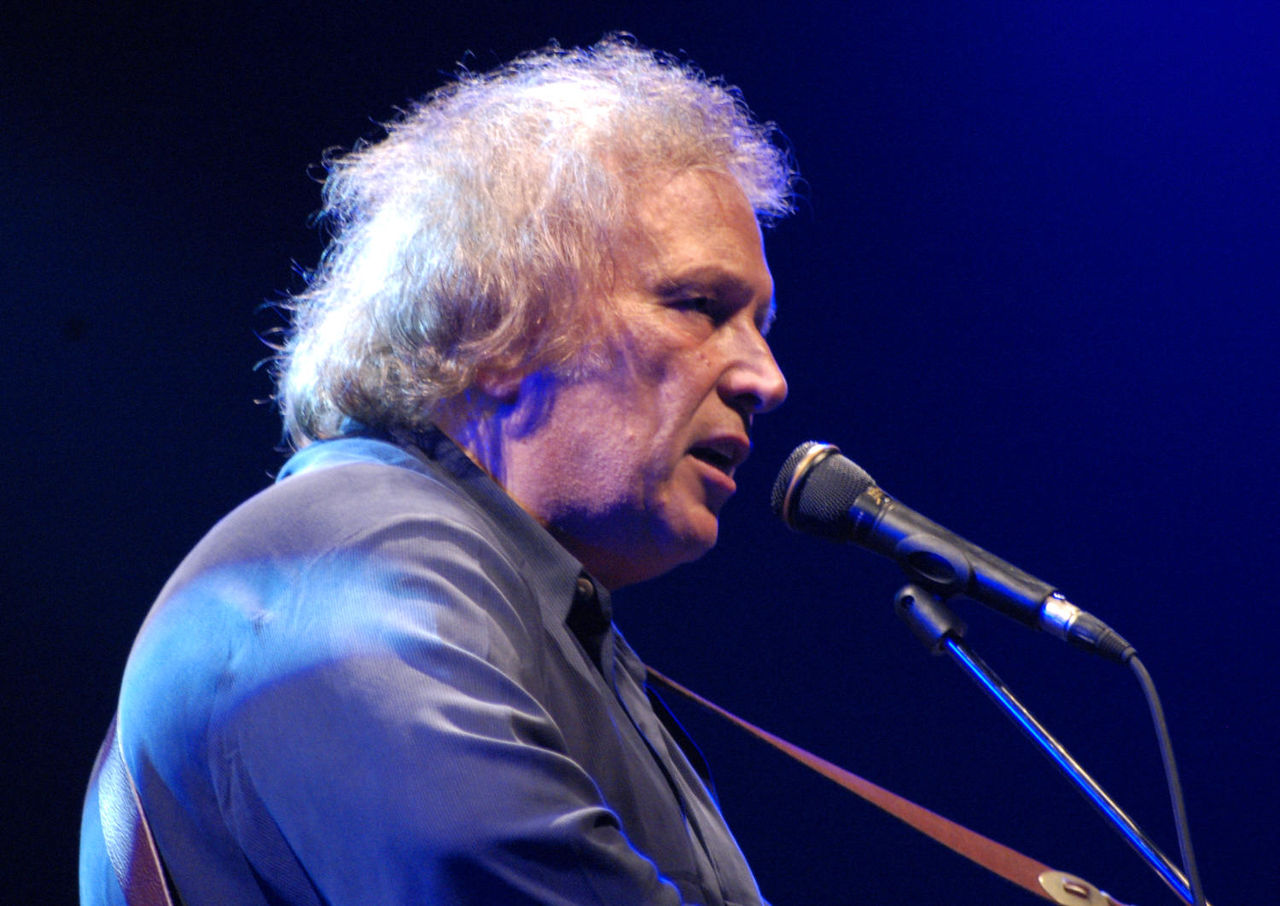 Alan Howard, CC BY-SA 2.0, Wikimedia Commons
Alan Howard, CC BY-SA 2.0, Wikimedia Commons
46. He Became A Symbol
McLean has been famously reticent about explaining the lyrics to “American Pie,” so more and more people keep trying to figure it out for themselves. Most agree that McLean thought that the plane crash—and the loss of Valens and the other musicians—seemed to bring in a period with some exceptionally upsetting events. Events that seemed like a loss of innocence for America.
Valens was becoming a symbol for loss and the US postal service was not about to let America forget him.
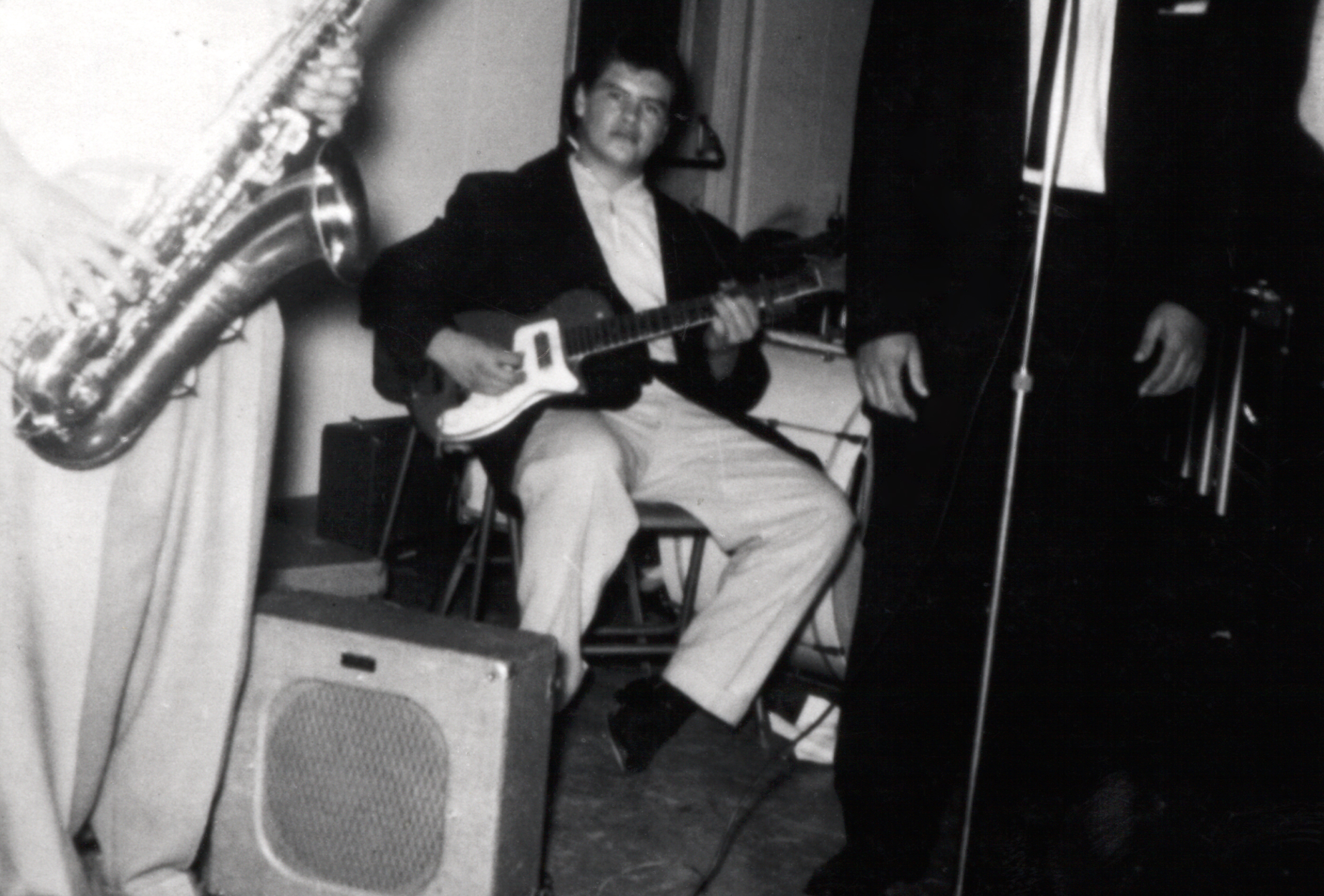 Michael Ochs Archives, Getty Images
Michael Ochs Archives, Getty Images
47. He Has A Star
Every time Valens’ name is in jeopardy of fading to obscurity, something seems to happen to revive it. In 1990, he received a star on the Hollywood Walk of Fame. Then, in 1993 the postal service came out with his image on a stamp. While these are great ways to commemorate Valens, there’s also a more musical way we can remember him.
48. He Was An Inspiration
Even though he ended up having to hide his real name, there was something about being Latino that was important to Valens’ career. You see, there is a movement in the rock and roll world called Chicano rock that is played mostly by Mexican Americans. Valens’ sound can still be heard in this style of music.
If you want to hear Valens these days, you can take a trip back to Clear Lake.
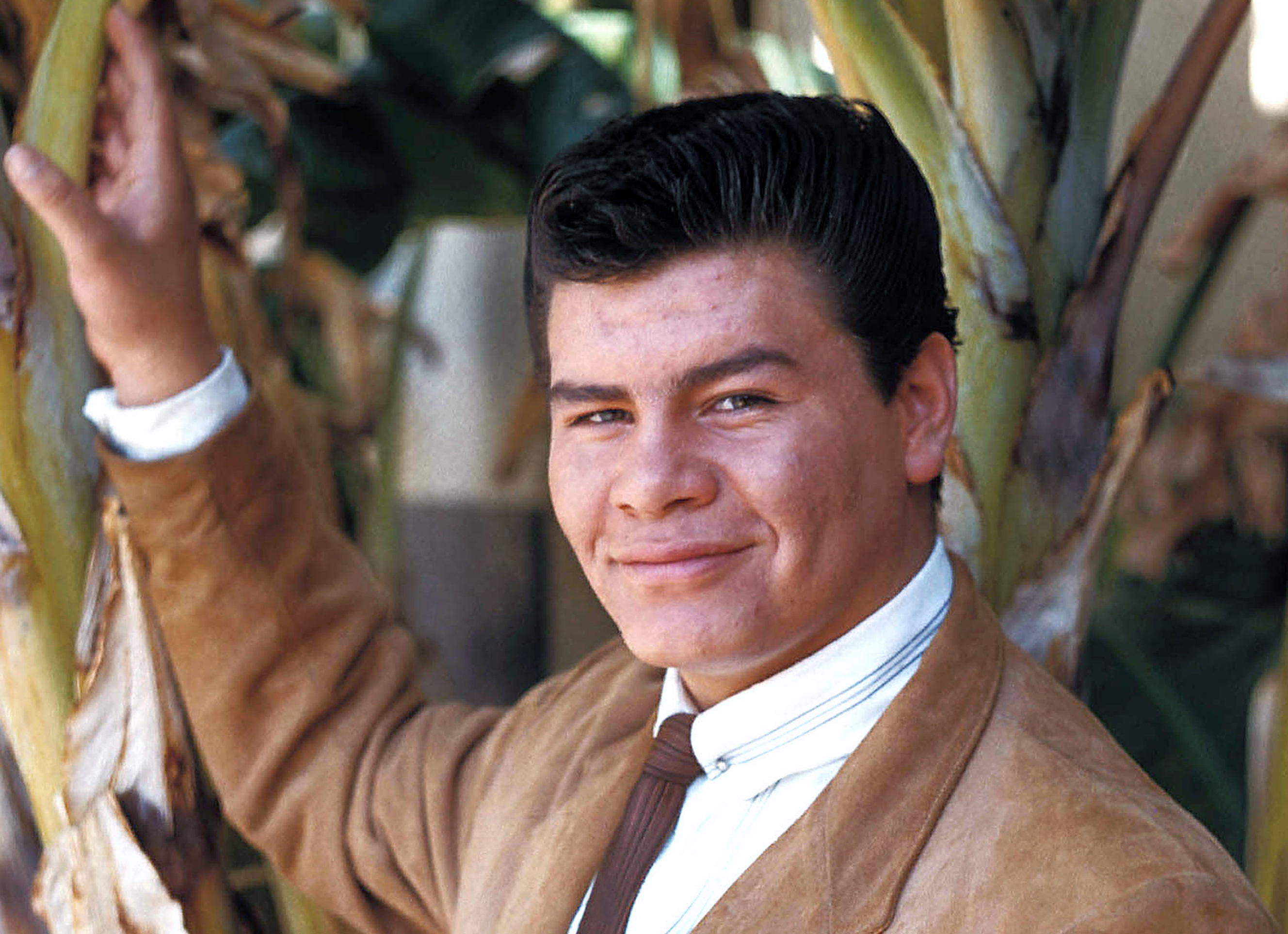 Donaldson Collection, Getty Images
Donaldson Collection, Getty Images
49. They Did Clear Lake Again
In 1979, supporters of the three who passed on that ill-fated flight headed to the Surf Ballroom in Clear Lake, Iowa. Instead of a sad memorial, they decided to do a concert. This soon became an annual event, and in 2009 they reached a milestone. They did a special show on the 50th anniversary of the night we lost Valens, Holly, and Richardson.
50. He Holds A Tragic Record
In Valens’ short time in the spotlight, he had done something few musicians have accomplished. With “Donna” and “La Bamba” he had the very rare two-sided hit.
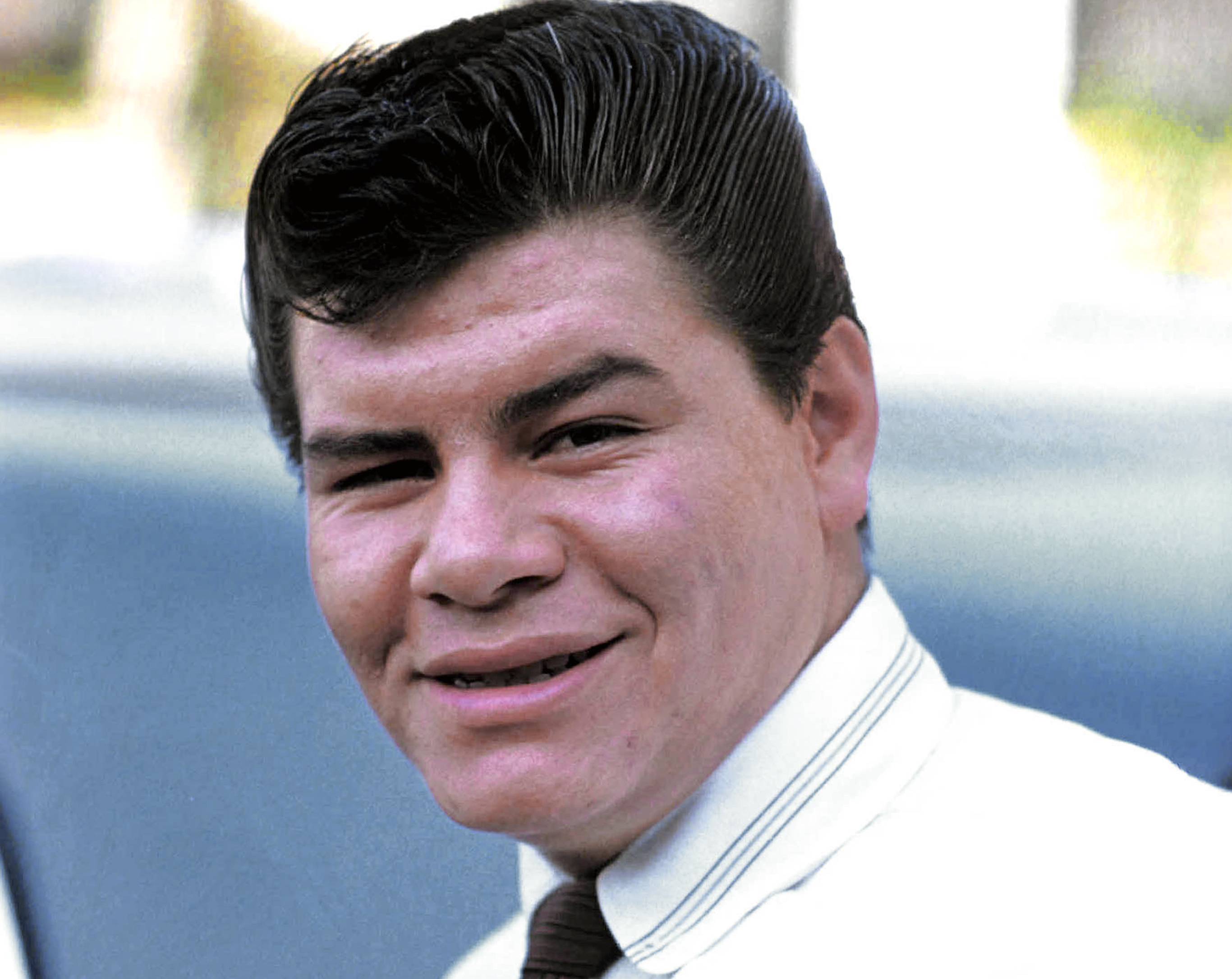 Donaldson Collection, Getty Images
Donaldson Collection, Getty Images

